
VOLUME 41 I ISSUE 10 I OCTOBER 2023






SPECIAL TOPIC



VOLUME 41 I ISSUE 10 I OCTOBER 2023






SPECIAL TOPIC

EAGE NEWS Implementing CCS projects in SE Asia
CROSSTALK Taking stock of climate change
TECHNICAL ARTICLE Petroelastic models for pre-salt carbonates




Scan the QR code to see for yourself.
CHAIR EDITORIAL BOARD
Gwenola Michaud (gmichaud@gm-consult.it)
EDITOR Damian Arnold (arnolddamian@googlemail.com)
MEMBERS, EDITORIAL BOARD
• Lodve Berre, Norwegian University of Science and Technology (lodve.berre@ntnu.no)
• Philippe Caprioli, SLB (caprioli0@slb.com)
• Satinder Chopra, SamiGeo (satinder.chopra@samigeo.com)
• Anthony Day, PGS (anthony.day@pgs.com)
Zero carbon-emission field operations for onshore seismic acquisition FIRST
• Peter Dromgoole, Retired Geophysicist (peterdromgoole@gmail.com)
• Kara English, University College Dublin (kara.english@ucd.ie)
• Stephen Hallinan, CGG Stephen.Hallinan@CGG.com
• Hamidreza Hamdi, University of Calgary (hhamdi@ucalgary.ca)
• Clément Kostov, Freelance Geophysicist (cvkostov@icloud.com)
• Pamela Tempone, Eni (Pamela.Tempone@eni.com)
• Angelika-Maria Wulff, Consultant (gp.awulff@gmail.com)
EAGE EDITOR EMERITUS
Andrew McBarnet (andrew@andrewmcbarnet.com)
MEDIA PRODUCTION
Saskia Nota (firstbreakproduction@eage.org)
PRODUCTION ASSISTANT
Ivana Geurts (firstbreakproduction@eage.org)
ADVERTISING INQUIRIES corporaterelations@eage.org
EAGE EUROPE OFFICE
Kosterijland 48 3981 AJ Bunnik
The Netherlands
• +31 88 995 5055
• eage@eage.org
• www.eage.org
EAGE MIDDLE EAST OFFICE
EAGE Middle East FZ-LLC
Dubai Knowledge Village Block 13 Office F-25 PO Box 501711
Dubai, United Arab Emirates
• +971 4 369 3897
• middle_east@eage.org
• www.eage.org
EAGE ASIA PACIFIC OFFICE
UOA Centre Office Suite 19-15-3A No. 19, Jalan Pinang 50450 Kuala Lumpur
Malaysia
• +60 3 272 201 40
• asiapacific@eage.org
• www.eage.org
EAGE AMERICAS SAS
Av. 19 #114-65 - Office 205 Bogotá, Colombia
• +57 310 8610709
• +57 (601) 4232948
• americas@eage.org
• www.eage.org
EAGE MEMBERS CHANGE OF ADDRESS NOTIFICATION
Send to: EAGE Membership Dept at EAGE Office (address above)
FIRST BREAK ON THE WEB www.firstbreak.org
ISSN 0263-5046 (print) / ISSN 1365-2397 (online)
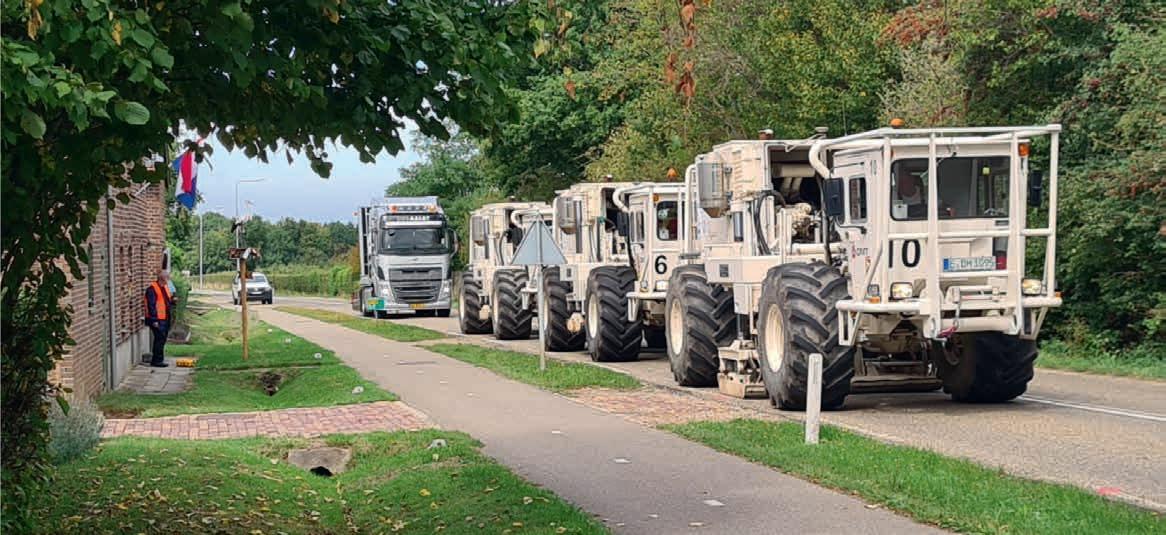
37 Diffraction imaging used to aid the understanding of an injectite field reservoir connectivity – Example on the Quad 9 UK Continental Shelf
Leon Barens, Yan Chen, Ross Wood, Chris Gunn and Robin Carter
45 Petroelastic models for Santos Basin pre-salt carbonates
Guilherme Vasquez, Marcio Morschbacher, Julio Justen and Elita de Abreu
53 Adapting hydrocarbon workflows to enable efficient and rapid screening for CO2 storage potential
Joss Smith, Ashley Uren, Joe Jennings, Thomas Butt, and Craig Lang
59 Zero carbon-emission field operations for onshore seismic acquisition
Jordan Bos, Nick Tranter, Ben Turner and Guy Drijkoningen
65 Interpretation of 3D UHRS to emphasise Quaternary glacial structures in the Ten Noorden van de Waddeneilanden Wind Farm Zone Benjamin Durot
69 Integrating energy datasets: the MDIO format
Altay Sansal, Ben Lasscock and Alejandro Valenciano
77 Geothermal: the gift that could keep on giving Sander de Jong, Kevin McCarthy and William Pettitt
83 Geoscience education and workforce development for the Energy Transition
Rasoul Sorkhabi
87 Using seismic and CSEM imaging to improve geological understanding of mineralisation along Mohns Ridge
Vetle Vinje, Marit Stokke Bauck, Hao Jiang, Carsten Scholl, Stephen Edwards, Sarah Hill, Federico Buriola and Richard Wombell
94 Calendar
cover: Wind turbines off the coast of Britain. Geoscientists are playing an increasingly important role in providing the data for such schemes.


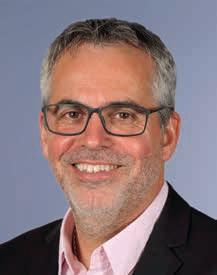
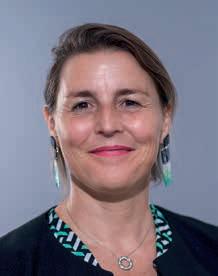

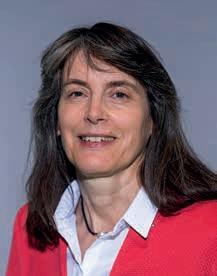
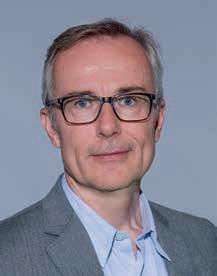
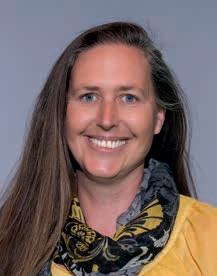
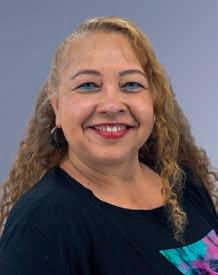
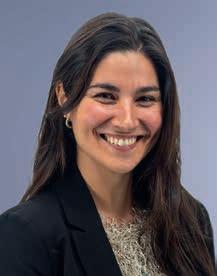
Esther Bloem Chair
Andreas Aspmo Pfaffhuber Vice-Chair
Micki Allen Contact Officer EEGS/North America
Adam Booth Committee Member
Hongzhu Cai Liaison China
Deyan Draganov Technical Programme Officer
Wolfram Gödde Liaison First Break
Hamdan Ali Hamdan Liaison Middle East
Vladimir Ignatev Liaison CIS / North America
Musa Manzi Liaison Africa
Myrto Papadopoulou Young Professional Liaison
Catherine Truffert Industry Liaison
Mark Vardy Editor in Chief Near Surface Geophysics
Florina Tuluca Committee member
Yohaney Gomez Galarza Chair
Johannes Wendebourg Vice-Chair
Lucy Slater Immediate Past Chair
Erica Angerer Member
Wiebke Athmer Member
Tijmen Jan Moser Editor-in-Chief Geophysical Prospecting
Adeline Parent WGE & DET SIC liaison
Matteo Ravasi YP Liaison
Jonathan Redfern Editor-in-Chief Petroleum Geoscience
Aart-Jan van Wijngaarden Technical Programme Officer
Carla Martín-Clavé Chair
Giovanni Sosio Vice-Chair
SUBSCRIPTIONS
First Break is published monthly. It is free to EAGE members. The membership fee of EAGE is € 80.00 a year including First Break, EarthDoc (EAGE’s geoscience database), Learning Geoscience (EAGE’s Education website) and online access to a scientific journal.
Companies can subscribe to First Break via an institutional subscription. Every subscription includes a monthly hard copy and online access to the full First Break archive for the requested number of online users.
Orders for current subscriptions and back issues should be sent to EAGE Publications BV, Journal Subscriptions, PO Box 59, 3990 DB, Houten, The Netherlands. Tel: +31 (0)88 9955055, E-mail: subscriptions@eage.org, www.firstbreak.org.
First Break is published by EAGE Publications BV, The Netherlands. However, responsibility for the opinions given and the statements made rests with the authors.
COPYRIGHT & PHOTOCOPYING © 2023 EAGE
All rights reserved. First Break or any part thereof may not be reproduced, stored in a retrieval system, or transcribed in any form or by any means, electronically or mechanically, including photocopying and recording, without the prior written permission of the publisher.
The publisher’s policy is to use acid-free permanent paper (TCF), to the draft standard ISO/DIS/9706, made from sustainable forests using chlorine-free pulp (Nordic-Swan standard).
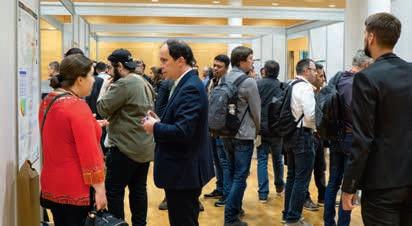
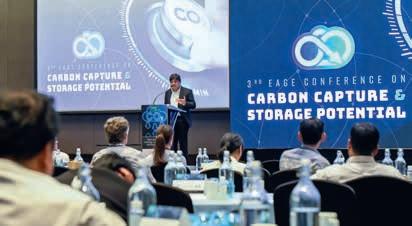
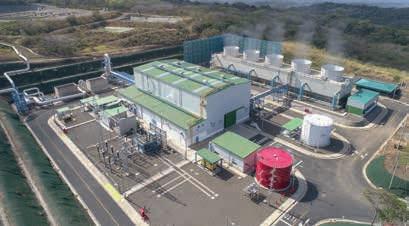
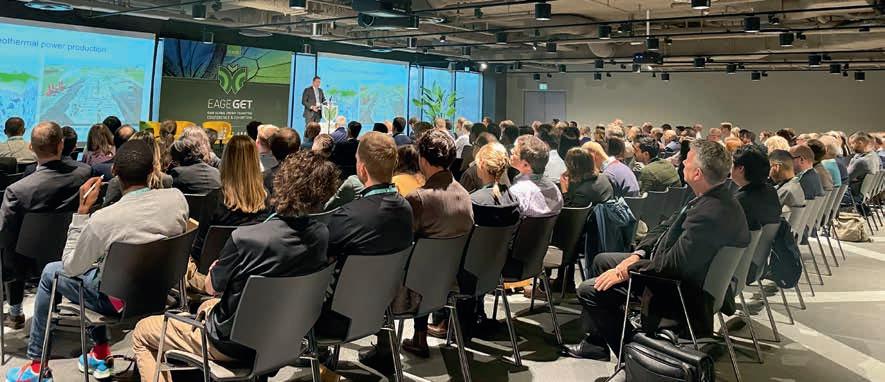
The Fourth EAGE Global Energy Transition Conference and Exhibition (GET 2023) takes place in just a few weeks at Le Palais des Congrès d’Issy in Paris, France, between 14-17 November. Following past successes, the conference seeks to highlight the critical role of geoscience and engineering skills in addressing the urgent challenge of transforming our energy systems.
Mike Branston, GET 2023 technical committee chair, says: ‘Geoscientists and engineers have a critical role in the energy transition. As one of EAGE flagship events, GET recognises and reflects the challenge that the global energy sector is facing and the urgent need to collaborate in order to transition more rapidly toward the use of sustainable energy.’
Here’s a detailed overview of the scheduled programme:
This year’s conference features an expanded strategic programme. Key discussions will bring together various energy leaders, regulators and financial experts to discuss a broad range of themes ranging from: Just and equitable transition, Technology co-existence, Sustainable financing, government & regulations, Geoscience communication & societal engagement, and New energy business models. Leading companies ranging from traditional oil and gas majors to emerging green-tech start-ups will also share their company journeys and key learnings. Sessions are expected to put the conference into a global perspective emphasising need for action, highlighting a people-centred energy transition as key to achieving the UN’s Sustainable Development Goal (SDG7) of ensuring access to affordable, reliable, and sustainable modern energy for all.
At the core of the conference is a dynamic technical programme, presenting a diverse range of oral and poster presentations that explore essential skills and solutions for advancing the energy transition. GET 2023 will feature over 100 presentations, ranging from innovative uses of the subsurface and offshore renewables to pivotal discussions on CCS and energy storage solutions. Various talks will also explore developments in geothermal energy, mining and synergies among subsurface uses. The conference programme will also underscore the role of integration, while emphasising environmental sustainability and solutions aligned with societal needs.
In addition to the core technical programme, the conference will host dedicated sessions, allowing participants to focus on specific themes of interest. The session on ‘Carbon storage regulation’ dives into evolving regulatory landscapes surrounding CCS technology, equipping attendees with crucial insights to grasp key legal and regulatory frameworks for safe carbon storage practices. The ‘Mining and critical minerals’ session delves into the indispensable role of these materials in the energy transition, addressing supply challenges and innovative solutions. ‘Insights from implementation of flagship CCS Projects’ offers valuable lessons from successful initiatives, including prospect identification, stakeholder engagement, and inno-
vative technology utilisation, essential for accelerating the transition to a sustainable energy landscape.
Attendees can also benefit from the short course ‘Basics of carbon capture and storage’ on Tuesday 14 November. The course will cover the technical geological and engineering aspects of CCS while also considering how these technical, policy and science aspects affect planning, regulation and financing of CCS. Designed for geologists, environmentalists, policymakers, and investors, the course programme will bridge science, risks, financing, planning, and social aspects of CCS.
If you are joining us in Paris, then be sure to visit the EAGE Community Hub to enjoy all the activities that EAGE planned for you.
Engage with EAGE special interest groups: You can keep up with the conversation on the challenges and needs of the energy transition by meeting up with the EAGE’s Sustainable Energy Circle and the DET Technical Community. Save some time on your agenda to get acquainted first-hand with their projects and engagement opportunities. Currently, they are looking for new highly motivated committee members, will you answer their call?
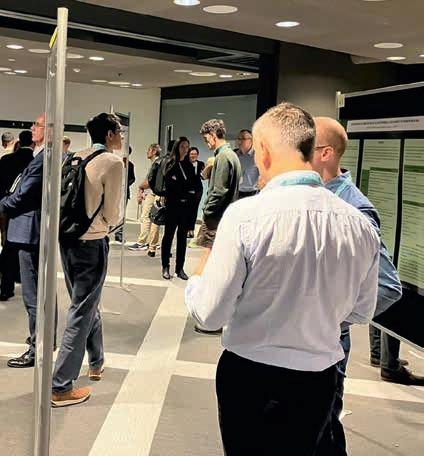
Meet & greet with Local Chapter Paris: Founded in 2018, LC Paris is already one of EAGE’s largest Local Chapters, and GET 2023 offers the perfect opportunity to meet and learn about its upcoming initiatives and how you can get involved.
Minus CO2 Challenge: We are thrilled that we will be announcing the winner of EAGE’s Minus CO2 Challenge 2023 on 14 November during the opening session. On 15 November at a special presentation open to everyone, the winning team will have the opportunity to showcase its innovative solution championing environmental stewardship and the pursuit of a greener future.
Mentoring programme: Considering transitioning to a different field? Willing to share your valuable knowledge
and expertise? Make the most of our one-year professional development initiative by exchanging career guidance and expanding your contact network. Pass by the Community Hub to learn more and sign up for the 2023 EAGE Mentoring Programme.
Volunteering corner: Want to take an active role in EAGE activities? Stop by to discover all the ways you can make a difference: from chairing and reviewing, to mentoring, leading communities and more.
Sustainable Energy Young Professional Award: EAGE has launched a new award category dedicated to the younger members in the geosciences and engineering community forging their path in the energy transition. Whether you are one, or if you know a promising talent deserving of an award, you are welcome to stop by to learn more about criteria and nomination procedures.
early
Curious to explore further? We encourage you to register before 31 October to take advantage of reduced registration fees. By participating in GET 2023, you will contribute to shaping a sustainable energy future while gaining insights, connections, and actionable strategies to drive change within your organisations and beyond. Visit www.eageget.org for further information.
There is no need to hold back. Everyone can benefit from help with their current career path, and especially making a transition, and that’s exactly what EAGE’s Coaching Programme is designed to do. Whether you’re eyeing a new role in data science, software engineering, or any other domain, our experienced coaches can be with you every step of the way.
Why not kickstart your transformation by participating in our webinar on 19 October at 10:00 CEST for a preview of what the programme has to offer? Both members and non-members can register for free. If you want to dive deeper into
the programme, learn more and register for the January 2024 edition on the Learning Geoscience platform.
You can connect, as well, with our coaches via LinkedIn. Esther Bloem, Gwenola Michaud, and Lucia Levato are building a supportive community of like-minded professionals who are passionate about carving out new career paths. For inquiries and updates, visit their LinkedIn page: linkedin.com/company/navigatinggeoscience-careers/.
Some of the coaches will be attending the GET 2023 in Paris so don’t miss the chance to engage.
Are you currently in transition thinking about your next steps? EAGE provides assistance to members who are unemployed and looking for possibilities to access educational programmes. Know more about the Economic Hardship Programme at eage.org/membership/ hardship-programme/.
Sign up for the October webinar
Learn more about the programme
Let's play
Hint: The power of least-squares imaging with the full wavefield.
1. DUG’S MULTI-PARAMETER FWI IMAGING USING RAW FIELD DATA
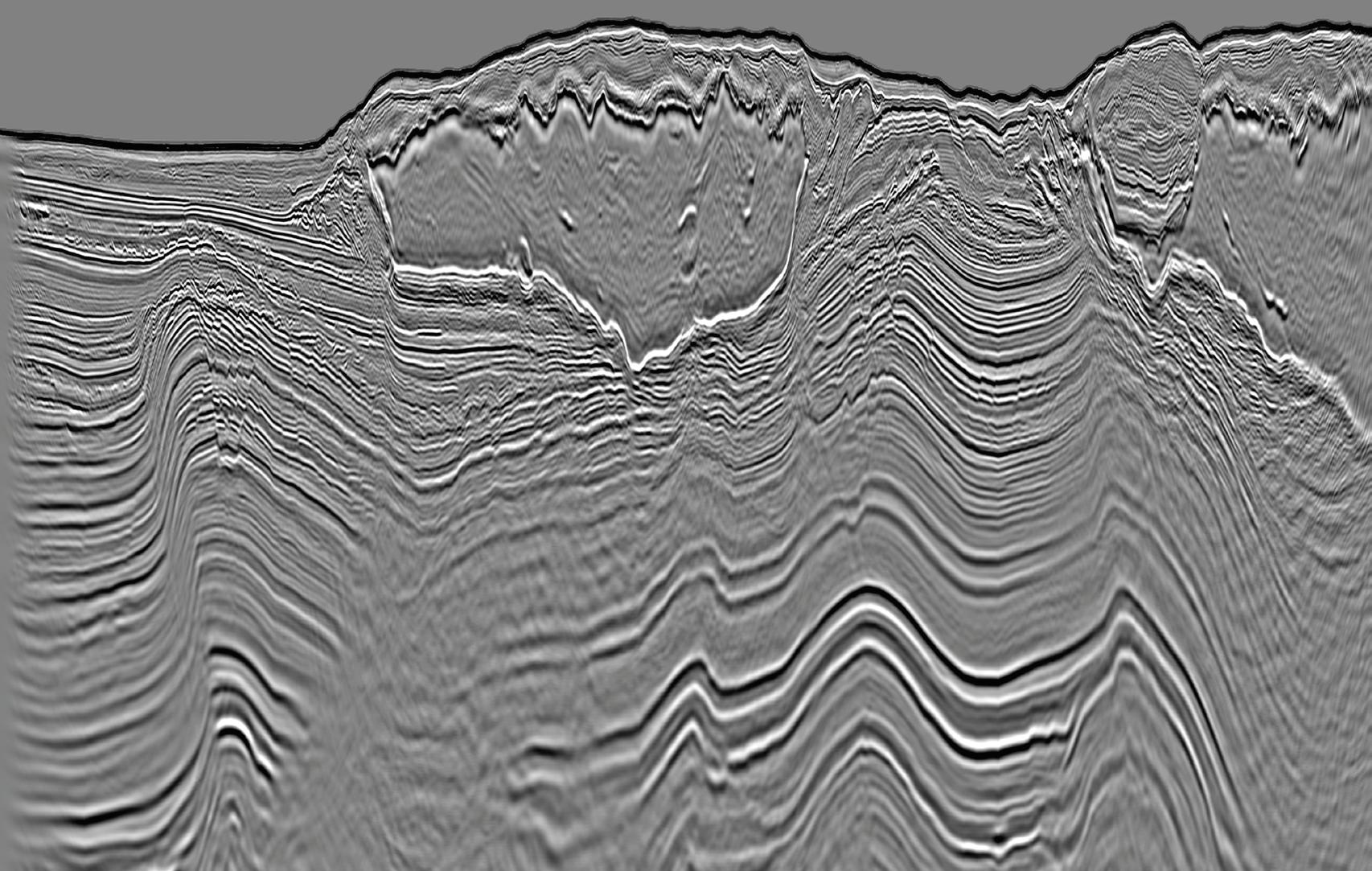

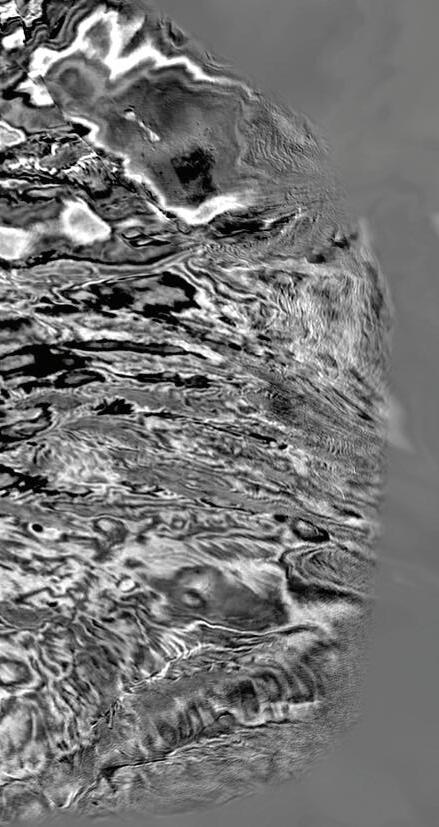
2. RTM USING THE SAME RAW FIELD DATA Near-surface amplitude-extraction
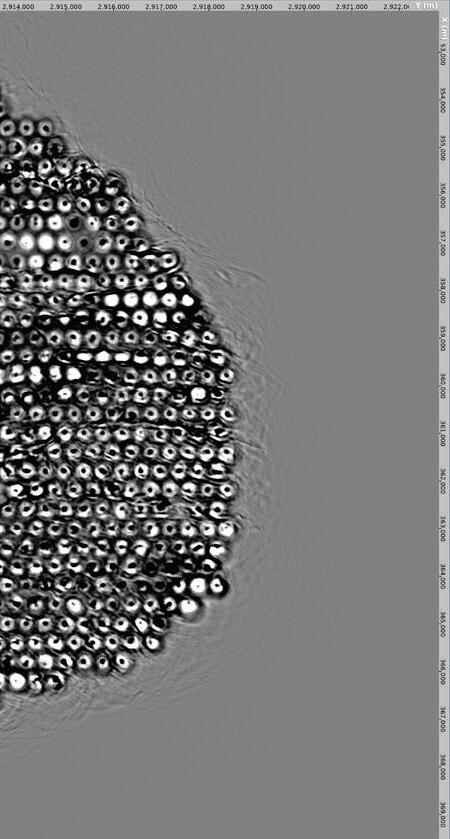
illumination, true amplitudes, superior vertical and horizontal resolution.
Data courtesy of Shell Answers: The
image has designature, deghosting, demultiple, interpolation, regularisation, superior
Full waveform inversion. Multi-parameter. Superior resolution. Superior imaging. A complete replacement for the conventional processing and imaging workflow.
Let’s talk — contact info@dug.com
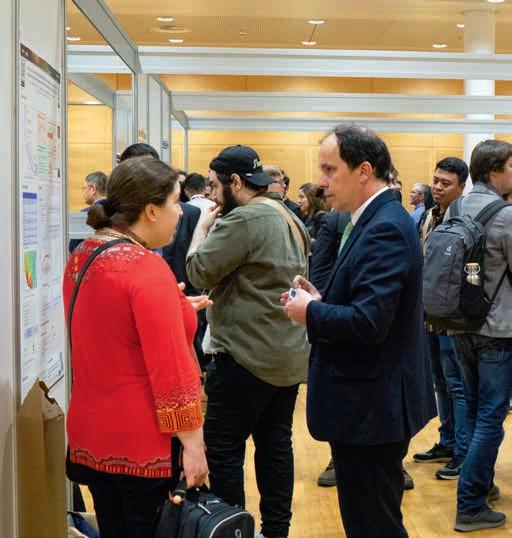
We encourage you to start thinking about your next ground-breaking abstract submission.

Mark your calendars for the next EAGE Annual Conference and Exhibition, set to unfold in the vibrant city of Oslo on 10-13 June 2024. The theme of the event ‘Technology and talent for a secure and sustainable energy future’ encapsulates our community’s pivotal role in (re) shaping the societies we inhabit and the professional realms we thrive in. Brace yourself for thought-provoking discussions that will ignite conversations on propelling us towards a sustainable energy future, all while harnessing cutting-edge technology and nurturing exceptional talent.


For Oslo we are working on building a broad and balanced programme that not only showcases the depth of discipline-specific expertise but also thrives on the synergies between oil and gas, CCS, renewables, and infrastructure geosciences.
Aart-Jan van Wijngaarden, EAGE technical programme officer and leader work processes in E&P at Equinor, says: ‘I hope to build on the success of Vienna this year and to continue with the broad spectrum and the good papers going from energy production and CCS, but also on near-surface aspects. I’m really looking forward to many good abstracts so that we
can build a great Technical Programme for Oslo next year.’
You can anticipate a comprehensive Technical Programme featuring multiple sessions that cater to diverse interests, encompassing dedicated sessions that resonate with diverse EAGE Technical Communities. These conversations will extend to the Exhibition’s dedicated zones, the Digital Transformation Area and Energy Transition Area, and the Workshops tackling the industry’s most trending topics.
Now is your prime chance to become a vital contributor to the Technical Programme of the 2024 Annual. Your involvement in the Technical Programme provides a valuable opportunity to share your expertise and knowledge with a global audience of energy, resource, and infrastructure professionals, as well as to shine a spotlight on your work through our sessions and publication in the extensive conference proceedings.
Ready to contribute? The Call for Abstracts for the 2024 Annual is already open. We welcome abstracts on multiple disciplines: Geophysics, Geology, Reservoir Engineering, Integrated Subsurface, Energy Transition, Mining and Infrastructure, and Data and Computer Science. Explore the array of sub-topics outlined at www.eageannual.org and submit your abstracts before 15 January 2024.

making its grand appearance in Paris on 25-27 March 2024. EAGE Digital 2024 is hosted by TotalEnergies under the inspiring theme of ‘Digital: Delivering better energy in a transforming world’.



Seize the opportunity to share your expertise by submitting your abstract(s) before 10 December 2023 to join our distinguished line-up in the Technical Programme. The submission topics encompass Digitalization and Insight Generation, Applied Analytics and Machine Learning, Digitalization as a Lever for Energy Transition, and The Digital Subsurface and Digital Toolkits. We encourage a wide range of submissions showcasing the latest in digital, technological, and business model innovation.
EAGE Digital acts as a dynamic forum, fostering collaborative exchanges and discussions among energy companies, cloud providers, and the vendor industry. The three-day conference offers a comprehensive mix of strategic and technical streams, a vibrant exhibition, and an array of networking and social opportunities. Prepare to share in lively discussions and showcases centred around digital innovation and its role in supporting future energy operations and the transition to net zero.
For further details on EAGE Digital 2024, including information about sponsorship, exhibition, and speaker opportunities, head to our website at www.eagedigital.org.
Johno van IJsseldijk writes: The last Friday of June marked our final Local Chapter event before the summer break. Like last year, we organised a networking event for students and young professionals, followed by a technical presentation about the nationwide SCAN programme. The meeting was held together with the EAGE’s YP community and student chapter of Delft University of Technology, sponsored by the PACE Event Support Fund.
After everyone had gathered at Café X on the TU Delft campus, the first item of the day was an ice-breaker challenge. Attendees had to match interesting facts to one another. This led to several, rather interesting conversations to find out who was once chased by a bear, whose intelligence dramatically grew due to AI, and who was named after a dead person? The aim of the game was to gather as many
matches on your bingo-card, while simultaneously meeting new people. The winner of the night was Evgeniia who bested her colleagues with an impressive score.
Once the excitement of the ice-breaker game quieted down, Johannes van den Akker from EBN provided the technical talk on the process and results of the SCAN programme, a nationwide project to shoot seismic surveys specifically aimed at exploring the Dutch subsurface for locations suitable for geothermal energy production. Over 1500 km of new high quality 2D lines were acquired, with a total of 30,000 shots recorded and over 350,000 receivers planted. In addition to acquiring new lines the programme also set out to reprocess almost 6,500 km of vintage seismic surveys. All the data is released for free at completion and ready for use for further geo-

thermal exploration and development (www.nlog.nl/scan).
The event was concluded by an outside BBQ to celebrate the summer weather, even though the wind did not want to cooperate. Fortunately, we were able to light the BBQ after some struggle so everyone was able to leave properly fed.






























This special Geophysical Prospecting issue on ‘Frontiers in Seismic Tomography and Imaging’ invites paper contributions that focus on improving seismic tomography and imaging with both physics- and data-driven approaches and their applications to derive high-resolution Earth models.
High resolution subsurface models are demanded for a broad range of geophysical applications, including but not limited to subsurface channels detection, hydrological modelling for groundwater contaminations and environmental sustainability analysis, hydrocarbon reservoirs explorations, and carbon sequestration monitoring.
Building an Earth model from seismic data typically involves two main steps: (1) using seismic tomography method to invert for Earth attributes (e.g., velocity, anisotropy, attenuation, etc.), and (2) applying seismic imaging method to migrate the time-domain reflection signals to map the depth-domain boundaries and discontinuities. In recent decades, seismic methods including ray- and waveequation-based tomography and imaging have been developed with numerous case studies, which successfully improve our understanding of hydrocarbon characteristics and carbon storage. However, as the data volume increases rapidly, it is con-
























tinuously challenging to derive reliable Earth models efficiently and accurately from seismic data. At the same time, the estimation of model uncertainties, both prior and posterior, and tracking the dynamic changes of subsurface properties become increasingly attractive.
All these applications require algorithm development that can consider more complex physics to enhance the resolution and fidelity of subsurface seismic models with high computational efficiency. Besides the physics-driven methods, the machine learning methods that incorporate human experiences to train the models using big data also show their great

potential in overcoming the bottlenecks of traditional seismic tomography and imaging.
We encourage the submission of papers covering different topics, from pure, fundamental research to more applied demonstrations and integrated case studies, including, but not limited to: Full waveform inversion; Reverse time migration; Least-square migration; Ray-based tomography and migration; Time-lapse imaging; Attenuation modelling; Application of machine learning in seismic tomography and imaging; and Field data case studies for hydrocarbon exploration and CCS monitoring.
Manuscripts should be prepared according to the author’s guidelines and submitted using the online submission webpage. Contributed papers are welcome to be submitted to Geophysical Prospecting by the normal procedure via Research Exchange (https://wiley.atyponrex.com/ dashboard?siteName=GPR), taking care on the online submission form to select the drop-down menu for the Special Issue: Frontiers in Seismic Tomography and Imaging. To ensure the manuscript is processed timely, we request the authors to clearly state in the cover letter that the manuscript is submitted to this specific Special Issue, and notify the Editor Sizhuang Deng <szhdeng@gmail.com> and GP editorial team <gpeditorial@ wiley.com> via email with the subject line ‘GP Special Issue submission on Frontiers in Seismic Tomography and Imaging’.
Submission starts on 1 November 2023 with a deadline of 1 April 2024. Acceptance/rejection notification date is 1 August 2024 and publication October 2024.
Guest editors for this Special Issue are Jianxiong Chen, Sizhuang Deng, Rafał Czarny, Ao Cai, and Guangchi Xing.
The Fifth EAGE Borehole Geology workshop is back with an exciting in-person edition in Al Khobar, Saudi Arabia, from 21-23 November 2023. The event promises to be action-packed and full of valuable experiences for professionals in the field. Here’s a glimpse of what attendees can expect:
Technical programme: We will feature a series of technical talks and keynotes delivered by eminent figures in the industry such as Prof Ruud Weijermars from KFUPM on ‘Borehole stability and hydraulic fracturing controlled by geoscientific characterisation of rock physics’ as well as Prof Joe Cartwright from University of Oxford speaking about his hand-on field experience.
Field trip to Dammam Dome: The event kicks off with a fascinating field trip to Dammam Dome, providing participants with the opportunity to visit a number of outcrops and discuss geological concepts related to fracture properties, fold structure, karst, and stratigraphy for integrated subsurface geomodelling as well as visiting some historical sites that led to the first discovery of oil in Arabia with the drilling of Dammam #7 in 1938.
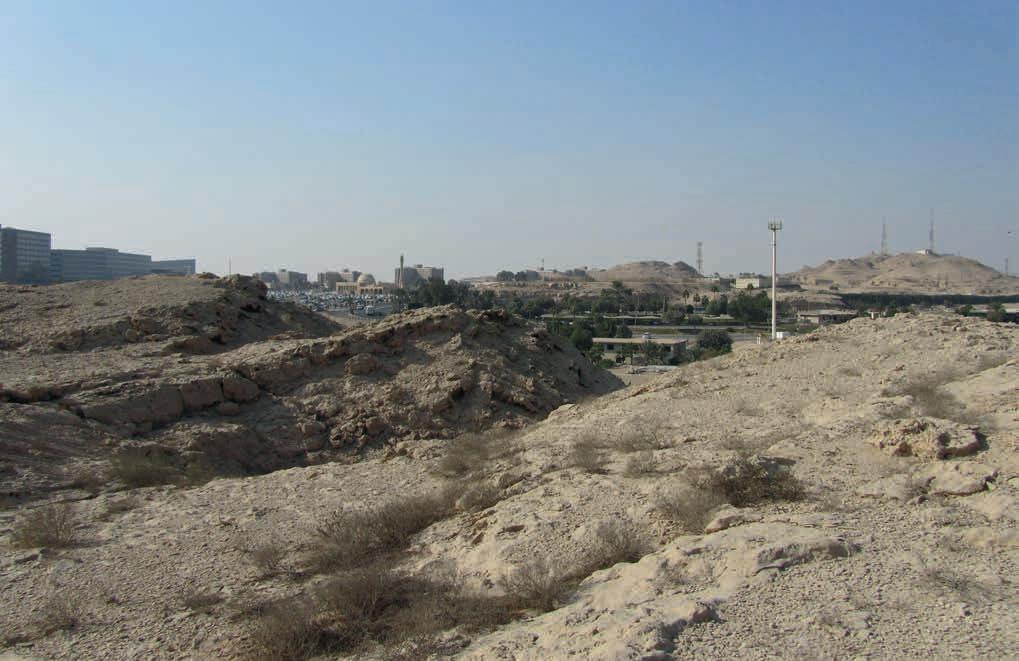
Core display and exercise: Following the field trip, participants will participate in a core display from a deep sub-horizontal coring, which is very rare in the industry. This hands-on activity will allow attendees to closely examine core samples, fostering a deeper understanding of subsurface geology.
In addition to the scheduled sessions, the workshop provides ample networking opportunities. If you’re a professional in the field of borehole geology or a related discipline, this is an event you won’t want to miss. It promises a blend of educational content, practical exercises, and networking opportunities. Mark your calendars and join us in November 2023.
Industry practitioners and researchers will gather in Kuala Lumpur on 17-18 October at the EAGE Workshop on Data Science ‘From Fundamentals to Opportunities’ to discuss the fundamentals, possibilities, career opportunities and pitfalls revolving around the data science domain. 36 papers are expected.
At the Third EAGE Workshop on Mineral Exploration in Latin America (9-10 November in Santiago de Chile) we’ll provide valuable insights into the role of mining in the energy transition. 20 papers will be presented.
New issues of Basin Research, Geophysical Prospecting , and Near Surface Geophysics will be published in October.

EAGE’s Second Workshop on ‘Unlocking of Carbon Capture and Storage (CCS) Potential’ held on 22-23 August 2023, brought together key thought leaders from the industry and governments as well as policymakers and researchers to explore the potential of CCS technologies in mitigating carbon emissions and it’s role in achieving ambitious climate objectives.
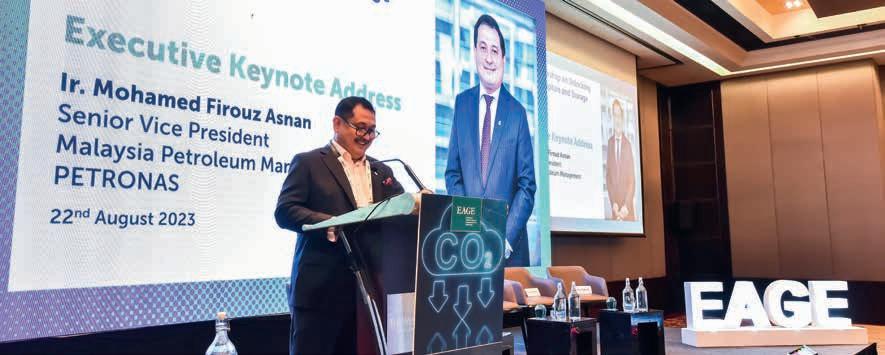
techniques. Scalability and adaptability are important considerations in designing CCS solutions for different industries and geographic locations. A flexible approach will be vital for addressing diverse emission sources and storage options.

It was clear that geologists have a crucial role in identifying suitable storage sites for captured CO2 in terms of site assessment, monitoring, and risk mitigation strategies to ensure long-term storage safety.





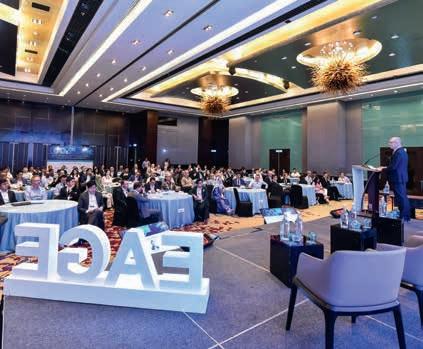
The workshop provided an unprecedented opportunity in SE Asia to discuss the pathways to harness carbon storage to meet the 2050 net-zero ambition.
At its nucleus were the pressing themes that epitomise our era: the intricate labyrinth of CCS project implementation and challenges, the tapestry of legislative and policy intricacies, the surge towards decarbonization, and the fusion of pioneering technologies.
Thought leadership was voiced eloquently in the Executive Keynote Address by Mohamed Firouz Asnan, Senior Vice President, MPM, PETRONAS. His impactful sharing provided significant insights on the enormous potential of CCS, challenges in delivering its full potential and actions to scale CCS in Southeast Asia.
Following that, a Panel Session on CCS Projects Implementation and Chal-
lenges discussed the key challenges and opportunities associated with implementing CCS projects. The second panel session on CCS Legislation and Policies were represented by dignitaries from the governments sharing the significance of a robust policy and regulatory framework to promote CCS implementation.
The exchanges underscored the pivotable role of CCS that geoscientists and engineers play the energy transition and nurturing a sustainable global ecosystem.
The meeting drew 200 delegates spanning 41 organisations from 18 countries. Azmir Zamri, Head of Resource Exploration at PETRONAS, raised the curtain on the workshop setting the stage for the conversations to come.
Sanjeev Rajput, Head, Reservoir Geoscience, Upstream, PETRONAS, crafted a resonant conclusion to its end.
In essence, the workshop transcended the realms of a mere event to provide a testament to our collective fervour to confront the colossal challenge of our epoch, elevating dialogues into action and aspirations into reality.
For scientists and engineers, this means continuous innovation and collaboration in CCS technologies and engineering solutions. Sustained investment in research and development is required that encourages scientists and engineers to explore new materials, processes, and
Encouraging managers to consider the entire lifecycle of CCS projects, from capture to storage means assessing environmental impact, cost-effectiveness, and sustainability over the project’s lifetime.
Stakeholder engagement is also key, requiring transparent communication and collaboration with local communities and stakeholders. Building trust and addressing concerns can ease the permitting process and facilitate successful CCS implementation.
For policymakers, the establishment of clear and supportive regulatory frameworks that provide incentives for CCS adoptionis a priority with carbon pricing mechanisms, emissions reduction targets, and streamlined permitting processes.
Government funding and private sector investment to accelerate CCS deployment involves policymakers incentivising innovation and project development by allocating resources to CCS initiatives. Sharing best practices, knowledge, and experiences across borders can also accelerate technology transfer and enhance global emissions reduction. It is hoped that the outcomes of this workshop will inspire concrete actions and further progress in the field of CCS. We look forward to welcoming you to the 3rd EAGE Conference on Carbon Capture and Storage scheduled from 12-13 August 2024 in Perth, Australia.
Geophysikalische Aktionsprogramm (GAP) was hosted this year in Karlsruhe, Germany from 11-14 May 2023. GAP is a networking meeting organised by students in the field of geophysics and related subjects. Since 1985, it has been held at a different university each year. The 2023 edition marked the fifth occasion it was hosted in Karlsruhe.
The GAP faced challenges during the pandemic, with declining student numbers, mostly consisting of veteran participants. However, this year brought about a significant change. GAP was able to welcome many new Bachelor students, resulting in 75 participants and 30 helpers, allowing the event to regain its previous size. Students from 11 universities, including Berlin, Bremen, Freiberg, Göttingen, Hamburg, Kiel, Cologne, Munich, Münster, as well as ETH Zurich and Utrecht University, participated, some returning after a long absence.
The event started on Thursday evening with icebreaker games and a cosy get-together. On Friday, six different excursions were featured, including exploration of Karlsruhe city and its surroundings on foot or by bike, visits to the Black Forest Observatory in Schiltach and the geothermal power plant in Insheim, and hiking through the beautiful Black Forest, both on the ground and in its treetops. In the evening, participants embarked on a pub crawl in the city centre, divided into several groups. Saturday was dedicated to various talks, starting with a presentation by the head of the Geophysical Institute (GPI) at the Karlsruhe Institute of Technology (KIT).






Master and PhD students subsequently presented their working groups, projects, and theses. A live Zoom meeting was organised with the overwinterers of the Neumayer III Station in Antarctica, who shared their experiences of living and working at the German Antarctic research station operated by the Alfred-Wegner-Institute (AWI). The morning concluded with a lecture on water management in cities, highlighting how structural measures such as greening public areas and implementing water collection systems can mitigate flooding.
and the EAGE Student Fund for their support.
Saturday evening arrived all too soon, and GAP bid farewell with a lively party celebrating the conclusion of this year’s event. On Sunday morning, participants said their goodbyes. After tidying up, everyone gathered in the evening for a barbecue, reflecting on a weekend filled with fruitful communication, exchange, and networking. Gratitude was expressed to all participants, helpers, and individuals involved in making this event possible.

After enjoying a typical Southern German soup with filled pasta, the afternoon session focused on presentations by the main sponsors. They not only introduced their companies but also discussed topics such as job search strategies and their passion for their respective fields. The day culminated in a meet ‘n greet session with the sponsors, accompanied by coffee and cake. Special thanks were extended to DGG, GGU, MGT, Tauber, TEEC, DVGeo, Exploserv, terratec,




The organisers express their heartfelt thanks to the EAGE Student Fund for its generous sponsorship of the event. The support played a vital role in making this year’s GAP a success and enabling students from various universities to come together and engage in meaningful networking and knowledge exchange.
By joining the EAGE Students community students can embark on a journey of learning, collaboration, and personal growth in the fascinating world of geosciences.

Summary of the dedicated session ‘Future of basin modelling in the energy transition’ led by the EAGE Basin and Petroleum Systems Analysis Technical Community at the 84th EAGE Annual contributed by session conveners Bjorn Wygrala (SLB, retired), Johannes Wendebourg (TotalEnergies), Thomas Hantschel (Terranta), and Axel Wenke (Equinor).
Basin Modelling has been used by geoscientists for more than 40 years to analyse subsurface elements and processes at basin scale through geologic time. A main application of basin modelling is Petroleum Systems Modelling (PSM) used as a key technology by the oil and gas industry for prospect risk assessment.
Climate change and the effect of increasing atmospheric CO2 concentrations has resulted in the ongoing global energy transition from CO2 emitting fossil fuels (coal, oil and gas) and associated methane emissions to energy resources that do not emit CO2 such as wind, solar, hydro and nuclear. It is clear that the energy transition needs geosciences to exploit CO2-free energy resources such as geothermal, and to find and produce the mineral resources that are needed to develop the required technology and infrastructure, but also to sequester CO2 in the underground.
This question of how basin modelling can be utilized to support geoscience studies required for the global energy transition was discussed covering four key application areas: Gas systems, Carbon storage, Geothermal systems and Mineral systems.
The session was opened by Perez-Drago (Beicip) with an introduction to the key topics and complementary modelling technologies such as structural, geomechanical and forward stratigraphic modelling. All applications can be subdivided into regional screening on a basin and play level, and local ‘prospect’ scale studies, with requirements for both spatial and temporal refinements of the data models and the modelling processes.
There is general agreement that natural gas will continue to be the largest single


global energy resource until at least mid-century. A particular gas system is represented by Brazil’s onshore basins which were presented by De Mio et al (Eneva, Brazil). Gas fields are mostly related to igneous intrusions and are relatively small and distributed over large areas so that cost-effective exploration and production concepts are required. A well-developed national electricity grid and innovative energy supply concepts are implemented based on local gas treatment and electricity generation systems close to the producing fields.
Next to CO2, methane has a strong global warming potential. Natural vs anthropogenic methane emissions are difficult to quantify. Torelli and Wendebourg (TotalEnergies) showed how basin modelling can be used to constrain natural offshore methane emissions as a function of thermal and geochemical conditions, and to determine emission rate variations through geologic time.
Global CO2 emissions can be reduced by the capture and subsurface storage of CO2 (CCS). While only very small amounts of anthropogenic CO2 are

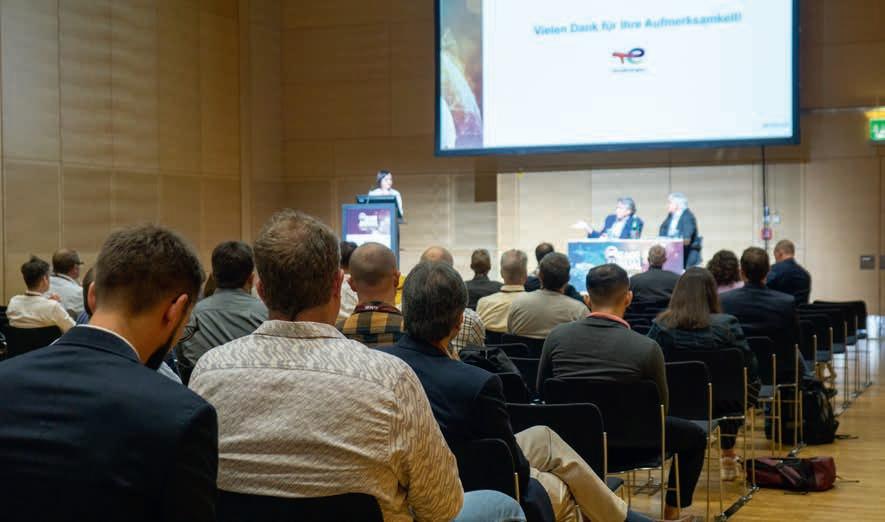
currently being captured and stored, technical developments are strongly incentivised by governments such as in Norway. The basin modelling approach has a role at the screening and early development stage, with the goal to prove safe applications, optimize processes and reduce costs.
Talks by Lemgruber et al (IFPEN), Perez-Drago et al (Beicip), Rodriguez et al (Halliburton) and Hidalgo et al (SLB) all agreed on the value of basin modelling for CCS investigations and the technical development path that needs to be followed. Basin modelling is already being applied for regional screening projects to find favourable locations for CCS projects. Adaptations to resolve local storage challenges are being made using high-resolution grid and time-step refinements for P-T and rock property predictions in target zones. Mainly regional screening projects were shown using conceptual models. Local field-scale modelling was not shown as it is of more strategic value to service companies and operators. We consider this to be a good sign as it shows the relevance of the approach and its technology.
Geothermal systems modelling
Basin modelling simulations are highly appropriate to constrain subsurface temperature distributions for regional geothermal systems assessments. Basin models go beyond simple inter- and extrapolations of temperatures and thermal gradients by modelling the underlying geological controls. Existing PSM can be directly utilised to screen entire basins and countries for prospective areas. Drilling risks associated with natural gas encountered during geothermal drilling have to be considered, as shown by Moscariello et al (Geneva University) from deep geothermal exploration in Switzerland.
The numerical treatment of geothermal systems modelling is an important research topic at the University of Bergen in Norway. Duran et al showed that in high enthalpy systems we need to solve for enthalpy rather than for temperature to obtain more accurate results.
Mineral systems and their geological properties and processes are similar to petroleum systems, however there are also differences and complications. New developments are required to handle the spatial and temporal scales and the complexity of multiple fluid interactions that result in the formation of mineral deposits. Melo et al (iCRAG, University College Dublin) showed a case study of sediment-hosted Zn-Pb deposits in Ireland to illustrate the required integration of geochemical and geophysical data for MSM.
The key challenges and opportunities for MSM were presented by Palmowski and Hantschel from Terranta, resulting in the following workflow: 1) analysis of key geological constraints that need to be incorporated in the model, 2) test the capability of ascending fluids to modify rock properties and prepare for ore depositions, and 3) analyse mass balance, process efficiencies and controlling factors in the system. A scenario testing approach is used to analyse the combined effects of fault properties and fluid geochemistry on the resulting mineral concentrations.
Whereas current standard basin modelling technologies can be applied to natural gas and geothermal systems, carbon storage requires refinements that are currently being developed for local scale modelling. Significant new developments are under way to model mineral systems. All participants agreed that basin modelling will be able to contribute significantly to the subsurface challenges posed by the global energy transition, similarly to the extent that it helps in oil and gas prospect derisking.
You can keep up with the conversation on the ‘Future of Basin Modelling in the Energy Transition’ by checking the session’s proceedings in EarthDoc and joining the Basin and Petroleum Systems Analysis Technical Community on LinkedIn at www.linkedin.com/groups/ 8993221.
OUR JOURNALS THIS MONTH
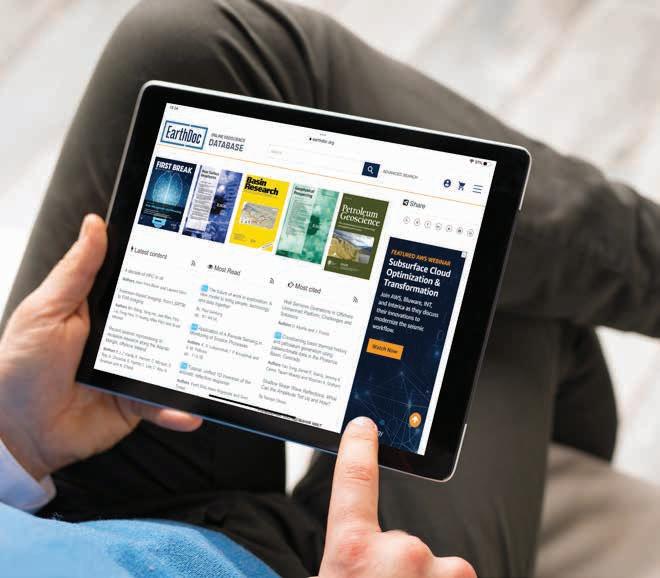
Geophysical Prospecting (GP) publishes primary research on the science of geophysics as it applies to the exploration, evaluation and extraction of earth resources. Drawing heavily on contributions from researchers in the oil and mineral exploration industries, the journal has a very practical slant. A new edition (Volume 71, Issue 8) will be published in October, featuring 16 articles.
Near Surface Geophysics (NSG) is an international journal for the publication of research and developments in geophysics applied to the near surface. The emphasis lies on shallow land and marine geophysical investigations addressing challenges in various geoscientific fields. A new edition (Volume 21, Issue 5) will be published in October, featuring 5 articles.
Editor’s Choice article:
• Case study of combined marine- and land-based passive seismic surveying in front of Nordenskiöldbreen outlet glacier, Adolfbukta, Svalbard — Helene Meling Stemland et al.
Basin Research (BR) is an international journal which aims to publish original, high impact research papers on sedimentary basin systems. A new edition (Volume 35, Issue 5) will be published in October, featuring 17 articles.
Editor’s Choice article:
• Footwall geomorphology during necking domain evolution: A new model for the Frøya High, mid-Norwegian rifted margin — Gresseth et al.
We are counting down to the opening of the 5th edition of the EAGE Petroleum Geostatistics Conference, which will be held in Porto, Portugal this 27-30 November. The conference will offer a great opportunity for all geologists, scientists and engineers in the field to mingle together, exchange innovative ideas and showcase their most recent research.
With the main theme ‘Towards a new era of geoenergy’, the organizing committee believes that we will spark new waves of geostatistics capabilities addressing the challenges related to carbon neutrality and the energy transition, while leveraging on the strong expertise in petroleum geostatistics. With the extended topic list this year, we look forward to receiving more papers related to CO2/H2 geostorage, geothermal applications, near-surface applications, and other energy resources.
Yann C. Dexcote, a technical committee member and a production geoscientist at Shell, says that a key focus area this year, in the spirit of the new era of geoenergy, is carbon capture and storage (CCS) projects, for which geostatistics are instrumental in assessing two key pillars: capacity and injectivity. For instance, the meeting looks forward to discussing best practices for the evaluation of storage capacity and key reservoir uncertainties,


commonly affected by issues around the data quantity and quality that characterize this type of projects. According to Dexcote, the conference will be a fantastic opportunity to discuss this type of issue, spanning across many themes (geo-modelling, geostatistics, data science and case studies). The committee is looking forward to using this opportunity to connect people working on new types of projects, research, and solution providers around the new geoenergy challenges.



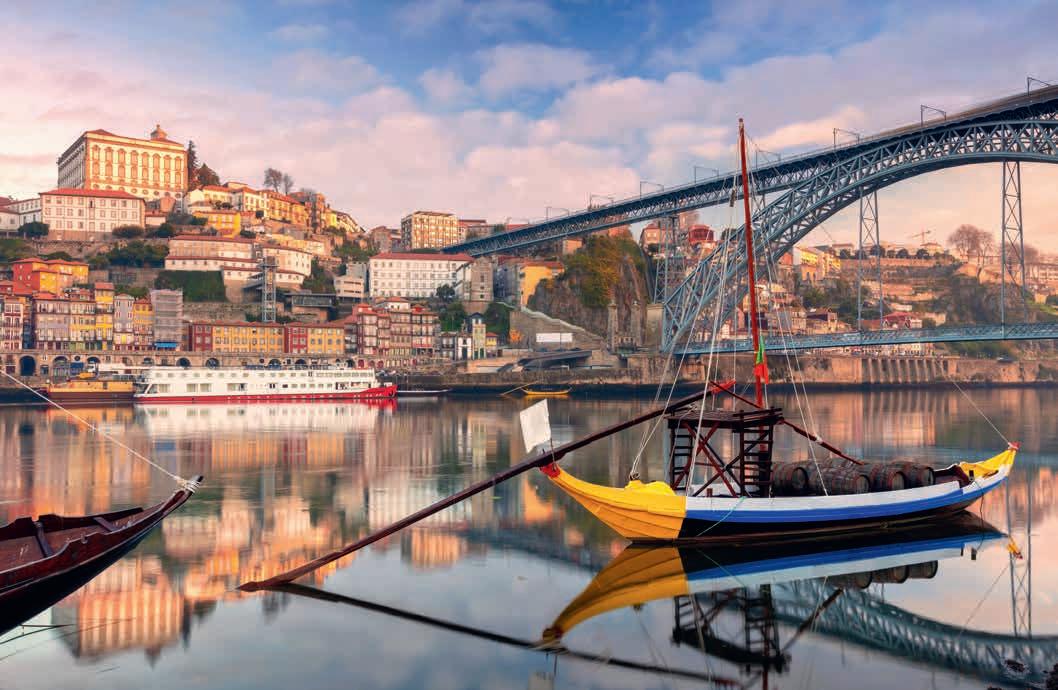
The conference will start each day with a keynote presentation. We kick off the first day with the keynote presentation from Sebastian Geiger, professor for sustainable geoenergy and energi simulation chair at the department of geoscience and engineering at the Delft University of Technology. In the following days, we will welcome two other keynote talks from Fernanda De Mesquita Lobo Veloso, CCUS project lead at the French Geological Survey and Reidar Brumer Bratvold, a professor of investment and decision analysis at the University of Stavanger. The conference this year also features a panel discussion, composed of professors and leading experts in the field of petroleum geostatistics. They will share their experiences and expertise regarding the future of the industry, the role of geostatistics in the energy transition and what industry and societal connections are needed for geostatisticians to contribute to the new era in geoenergy.
Visit our website www.petroleumgeostatistics2023.org to learn more about the event and the detailed programme. Don’t forget to sign up before 1 November to enjoy the reduced rate.
How our young professionals are working together on career development and promoting geoscience and engineering in the wider commmunity.
Innovative, enthusiastic, persistent. These are just some of the adjectives that define our Young Professional (YP) members, characteristics that are empowering them to lead the advancement of geoscience and engineering. Let’s embark on a journey featuring inspiring early careers around the globe that are leaving a positive impact in their communities.




We start in Krakow, Poland. Brij Singh, researcher at the Institute of Geophysics of the Polish Academy of Sciences, wanted to support fellow colleagues who were in the process of choosing their career path, that’s why he was motivated to join the EAGE Young Professionals Special Interest Community. ‘I believe that explicit skills and knowledge of available opportunities is the key to success for any young professional in an already extremely competitive world. I had been a beneficiary of this in the past, and I will keep pushing so that other early career people get the same opportunity.’
Singh took part in the YPs special session ‘Career Diversity Within and Beyond Geoscience’ at the 84th EAGE Annual. ‘As a host, I had the opportunity to represent an integrative approach to different technical communities within
EAGE. Different speakers shared their views on the challenges and opportunities in geosciences. This is crucial information for young professionals in the early stage of their careers.’
Singh is also part of the EAGE Mentoring Programme Committee, the oneyear professional development initiative that aims to connect young members seeking career guidance with middle-career/senior professionals who are willing to transfer their valuable knowledge. ‘My participation as a committee member of the YPs and the Mentoring Programme has been brilliant. In the last two and a half years’ journey with EAGE, I learned professional ethics - the value of people, differing ideas, and social behavior.’
Our journey continues to Kuala Lumpur, Malaysia, where Sathes Kumar Sandasegaran has been combining his work as reservoir geoscientist at PETRONAS with volunteering in the technical committee of the EAGE Conference on the Future of Energy. The event took place on 12-13 September in Kuala Lumpur. It gathered geoscience and related disciplines professionals, practitioners, researchers, academicians and students from the oil and gas and energy-related industry to exchange their best ideas around a renewed understanding of the importance of geosciences and earth sciences in a sustainable future.
Sandasegaran explains that being part of the event’s technical committee was ‘a good opportunity to kick start some YP activities in the region’ in response to early careers’ expectations and challenges. The conference featured ‘Future Energy Leaders’, a programme in which YPs and students were invited to network with their peers and learn from the industry’s more experienced professionals.
Our last inspiring story takes place in Villahermosa, Mexico. Kevin Cuevas, currently a geosolutions geophysicist in SLB, started his journey in our Association being part of the EAGE Student Chapter Instituto Politécnico Nacional
(IPN). Participating in the Chapter was the first step of a promising career: ‘I connected with international colleagues, attended enriching events, and acquired abilities that helped me to find a job as well as to perform successfully in it.’ During his tenure as the Chapter’s president, he had the chance to gather with his Latin American peers and organise the first regional EAGE Student Chapters Meeting.
His commitment to positively impacting the Mexican geoscience and engineering community motivated him to lead the creation of the EAGE Local Chapter Mexico by reaching out to a wider network. It proved to be an ambitious task. ‘The initial responses discouraged me. However, I remembered some conversations I had with my teachers and realised that it was time to find another alternative. As a result, I reached out to young professionals.’ Cuevas invited those of his peers just starting their careers to bring forward new ideas and innovative ways of working. Interesting fact: the team is entirely made up of professionals below the age of 30.
The Chapter has already organised several activities covering technical and career development topics, such as accelerating hydrocarbon discoveries with prospectivity focused imaging methodology, subsurface digital analytics, and women engineers’ outstanding role in the industry. They also have participated in local initiatives dedicated to reaching out to the general community about the importance of earth sciences. Miriam Ramírez, the Chapter’s vice president says that ‘Besides sharing knowledge, we realised that younger generations are eager to be part of the earth sciences community; this inspires us to further endeavours in the support and promotion of geosciences.’
If you are a student reading this, don’t forget that a multitude of EAGE resources are at your disposal, empowering you to always go one step further, leave a positive mark in society and find the network you need.
Instituto Politécnico Nacional (IPN)
Mexico Student Chapter members report : We have always been clear about our purpose: to disseminate the Earth sciences among new talent and the general public. All members have experienced the enriching journey of being part of this multi-disciplinary chapter by embracing clean energies, exploring new areas of Earth sciences and strengthening their knowledge.
The Chapter firmly believes that the future demands versatile professionals capable of applying geological and geophysical techniques for the preservation of the environment. That’s why we have carried out various events to engage students in industry and academia while discussing the conservation of Earth sciences.
We have good memories of the celebration of the World Water Day, where we brought together academics and researchers from the three most prestigious universities in the country. With over 15 presentations and a demonstration of equipment, we impacted more than 300 students. Months later, we took part in the World Oceans Day, participated in the Cumbre Politécnica del Petróleo, and
in the 100th anniversary of the Escuela Superior de Ingeniería y Arquitectura (ESIA), which enabled us to connect with other student chapters and share knowledge in a great environment. We also look back on events like the commemoration of the Chichonal volcano eruption, featuring various conferences by academics.
Every step we have taken has been made possible by the support of sponsors, teachers, researchers, and collaborators.
Being the Best EAGE Student Chapter 2022-2023 is just the beginning of a future filled with valuable achievements and learnings. We hope to show what can be accomplished when working together towards a common goal.
We encourage students around the world to renew their EAGE membership and engage with a student chapter. It is a wonderful opportunity to be part of a vibrant community dedicated to Earth sciences, offering unique experiences, resources, and networking possibilities.
If you would like to know more about our Chapter’s initiatives, connect with us in Facebook: @EAGEIPN.
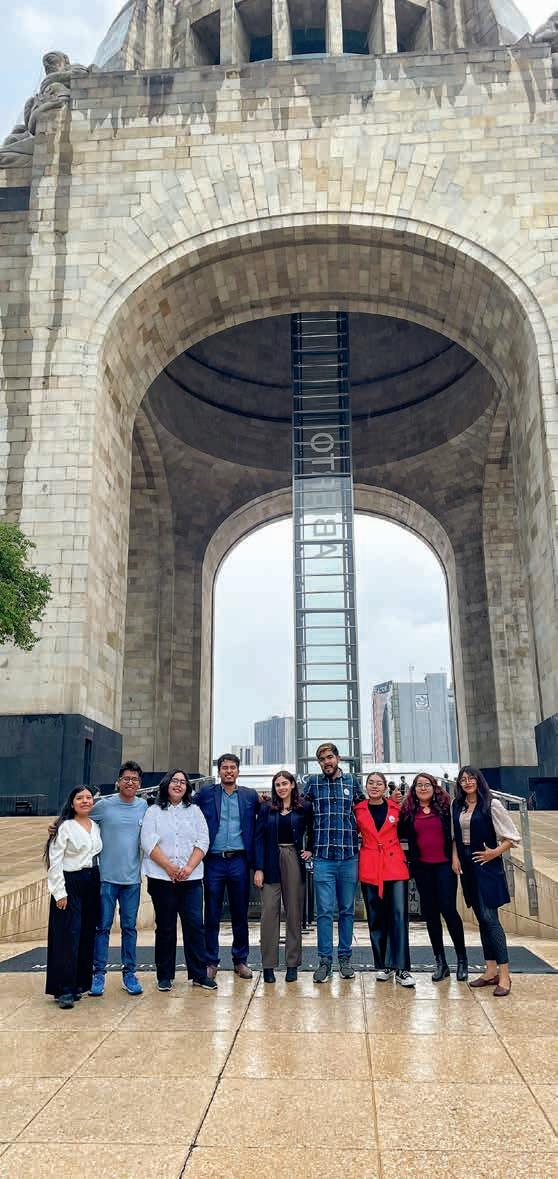

This is just a reminder to all members to take the time to update your affiliations so you can benefit from all the connections in our geoscience an engineering community.
Networking and sharing knowledge and experience with professionals who have similar interests is a great way to keep up with the latest developments in your field, and perhaps help promote innovation and technical progress.
We kindly invite members to spend a few minutes updating your EAGE affiliations in Circles, Technical and Special Interest Communities, and Local Chapters. This will help you stay connected with fellow members, receive personalised content, and ensure our offerings meet your needs.
Update your affiliations here
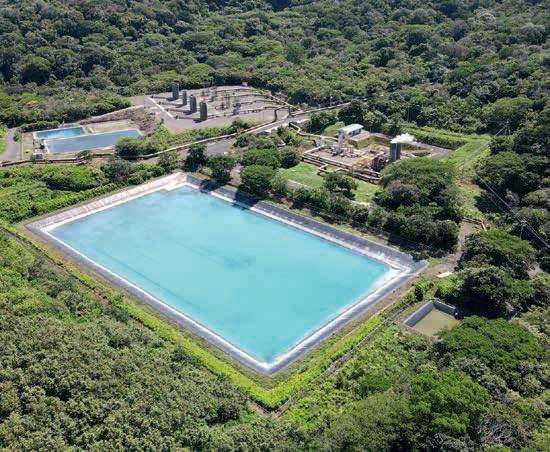

A series of upcoming EAGE events in Latin America are due to put the emphasis on sustainability and energy transition.
The conversation starts in Medellin, Colombia, at the First EAGE Workshop on Hydrogen & Carbon Capture Sequestration in Latin America on 5-6 October. Hydrogen and Carbon Capture, Sequestration, and Utilisation (CCSU) industries will be a critical element of any sustainable energy strategy; therefore, geological storage of H2; CO2 sequestration; risk management; monitoring, verification and reporting, as well as economic and regulatory barriers, are expected to be addressed. The workshop will also feature an interactive working session in which the attendees will jointly define improvement opportunities for hydrogen and CCUS in the region.
A few days later, on 24-25 October, Bogota, Colombia will host the First EAGE Workshop on Water Footprint. This event
will bring forward national and international success stories, industry-academia knowledge exchange spaces, and forums with experts, to gain an understanding of the concepts, methodologies, trends, and opportunities for corporate and integrated water management improvement, looking forward to benefiting the country’s sustainability and competitiveness.
The next stop will be in Santiago de Chile, Chile, where the spotlight will be set on the role of mining in the energy transition at the Third EAGE Workshop on Mineral Exploration in Latin America on 9-10 November. Mining companies, prospectors, government agencies, academics, and mineral exploration service providers (contractors, equipment manufacturers, and software providers) will gather to discuss local and global trends in resource exploration, as well as how mining can contribute to accomplish a greener future.
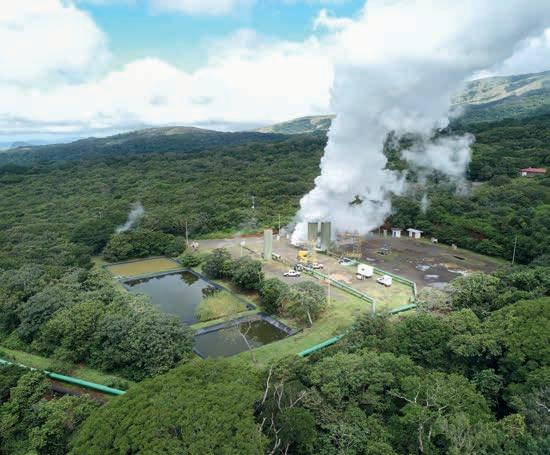
The year ends with the Second EAGE Workshop on Geothermal Energy in Latin America, taking place on 15-17 November at Guanacaste, Costa Rica. This will be the perfect venue to share experiences and lessons learned during geothermal resources exploration, development and exploitation stages, contributing to the establishment of appropriate practices for commercial uses of geothermal resources in the Americas. An exciting field trip to Las Pailas Geothermal Complex will enhance attendees’ experience even further, as it includes a visit to the field facilities, production wells, separator station, storage ponds, reinjection wells and generation plants.
Mark your calendar, participate in our events, and let’s join forces towards a sustainable future.
Find out more details
The EAGE Student Fund supports student activities that help students bridge the gap between university and professional environments. This is only possible with the support from the EAGE community. If you want to support the next generation of geoscientists and engineers, go to donate.eagestudentfund.org or simply scan the QR code. Many thanks for your donation in advance!




Séverine Pannetier-Lescoffit is chief engineer geophysics at Equinor who counts rugby and music as her passions outside work. At CGG she was among the first women to work offshore. As a retired player she became one of the first women to referee both men and women’s international rugby, and believes the game helps to develop the managerial skills needed in professional life.
of mother
My mum was one of the few women studying in the sciences faculty. She came from a poor background and education was a priority for her. My older sister has a Master’s in archaeology, my younger brother a PhD in maths. Our mother became a maths and physics teacher and pursued geology as a hobby. As a child on holiday I would always try to find some minerals or fossils to give to her.
What led to geoscience?
Teachers! I was so lucky with all my science teachers. In high school I was invited to visit a lab at the Ecole Normale Superieure de Paris. The team had just returned from a mission in the Nautile deepwater research submarine, to pick up some samples from a trench. When I had made up my mind to apply for Ecole Nationale de Geologie in Nancy, one teacher worked overtime to prepare me for the admission tests. Later the physics of the Earth caught my attention and I opted to specialise in geophysics.
After graduating I applied for a job offshore with CGG Marine. We were the first women onboard the seismic survey vessels in 1998.
At that time rotations were long — six weeks - and communication with the shore was poor. Days were long, sea could be rough and community life tough. I quickly developed a system of sisterhood, friendship, and communication. I also gained a lot of ‘brothers’ ready to protect me but able to
annoy me a lot as well! More importantly I learnt very quickly about the geophysical operations and signal processing involved.
As transverse and various as possible! From working on a production asset where IOR and well planning was the focus, to research on GRM, then onto an international gas project, followed by leading a group of subsurface specialists to now being chief engineer, top adviser for geophysics in Equinor.
What next?
I enjoy having access to ‘the bigger picture’, as well as interacting with colleagues from diverse backgrounds. My ambition is to make sure that we use our competencies and technologies to work in an efficient and yet innovative way. Geophysics has an important role in this.
Very classic story: being in geology school we had a strong feeling of belonging and hence representing our school at student events. My sport was handball. But the rugby team needed support. When I realised this was for all types, even the tiny one with a big mouth and a strong mind, I knew I had found my place. Rugby is a perfect school for teamwork, hard work, diversity, and great fun. It has been an amazing way to integrate in Norway as well.
When my body said stop to playing rugby, I moved to being a referee. Still
wanting to be part of the game, I discovered a management role that I really enjoyed: making sure players are safe while being allowed to deliver their best game within the rules. In 2018 I was part of the first women referees team to officiate in a men’s European league game. The pace of the men’s senior games is usually faster than the women’s but discipline can be weaker, so both require right positioning and preventive management. Now I have started my journey to become a match commissioner for international games. This is a role that requires planning and execution skills in a heated situation where empowerment and leadership are key to success.
Rugby is a contact sport with associated risks. Referees, match commissioners, field managers, and coaches all have the responsibilities for the safety of players. Responsibility for safe practice is a collective mindset. This is priority number one on the pitch. It’s exactly like taking care of each other when working offshore.
Definitely. My three kids all play instruments. Learning to play music is great for math and languages (music being the only universal one). They drag me to a huge number of concerts they’re performing at. I still play myself when time allows (saxophone and cello) and enjoy going to symphonic concerts, opera, and live jazz events.
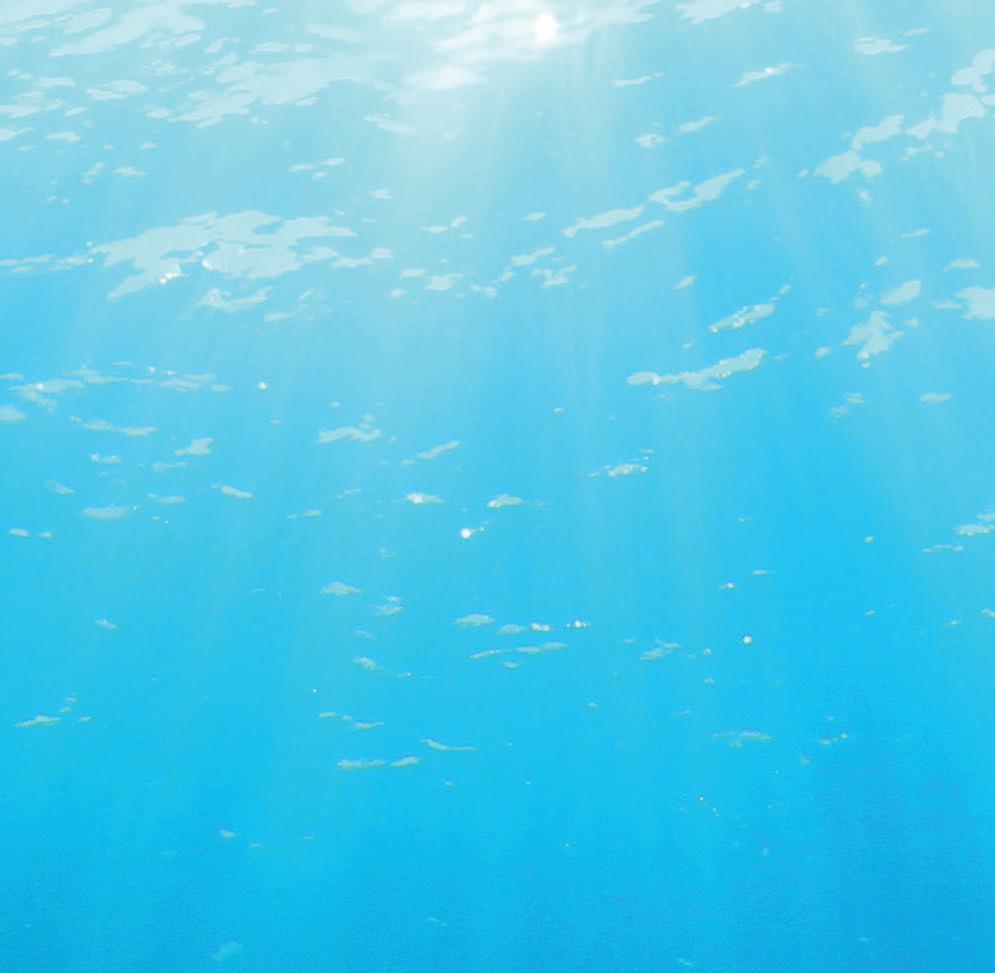
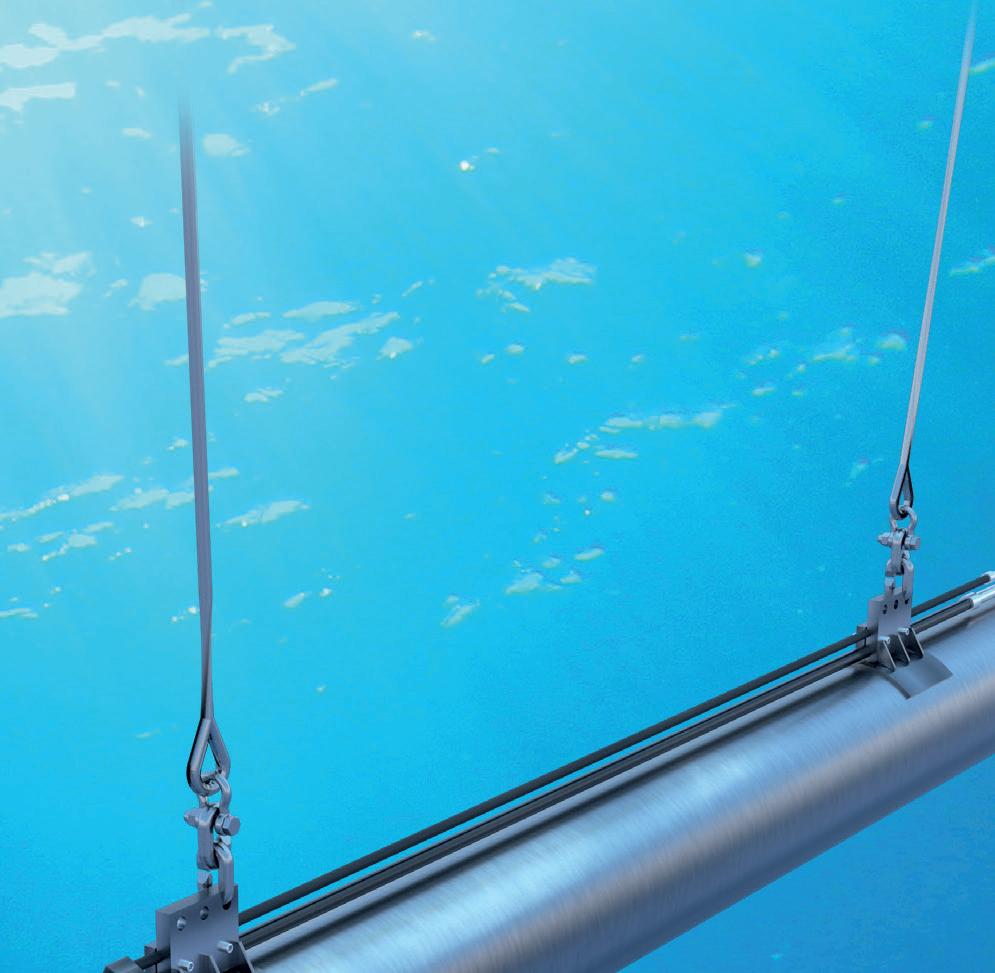

Innovative Low Frequency Broadband Marine Seismic Source
TPS provides geophysical clarity by enhancing the quality and value of seismic data and enabling effective imaging of the most complex geologies. It has been successfully deployed in commercial marine acquisition operations.
Choose TPS to Optimize Your Marine Seismic Acquisition
•Improved imaging
•Reduced environmental impact
•Enhanced operational efficiency
•Improved safety

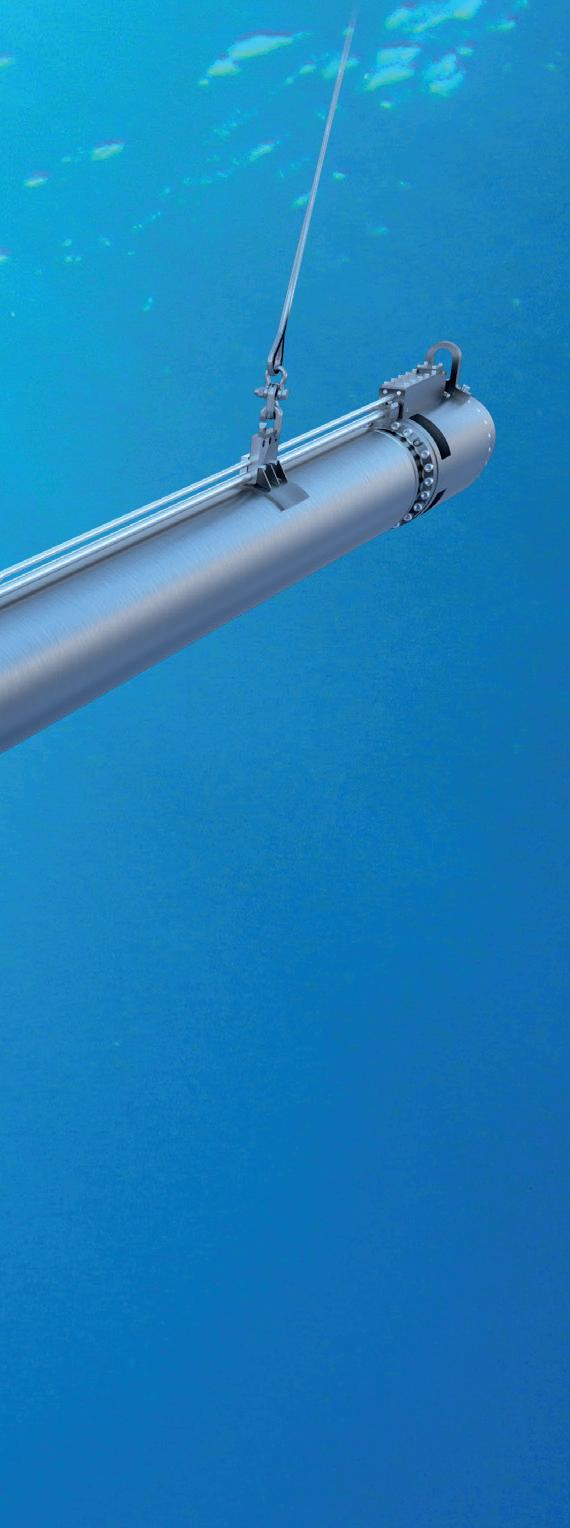
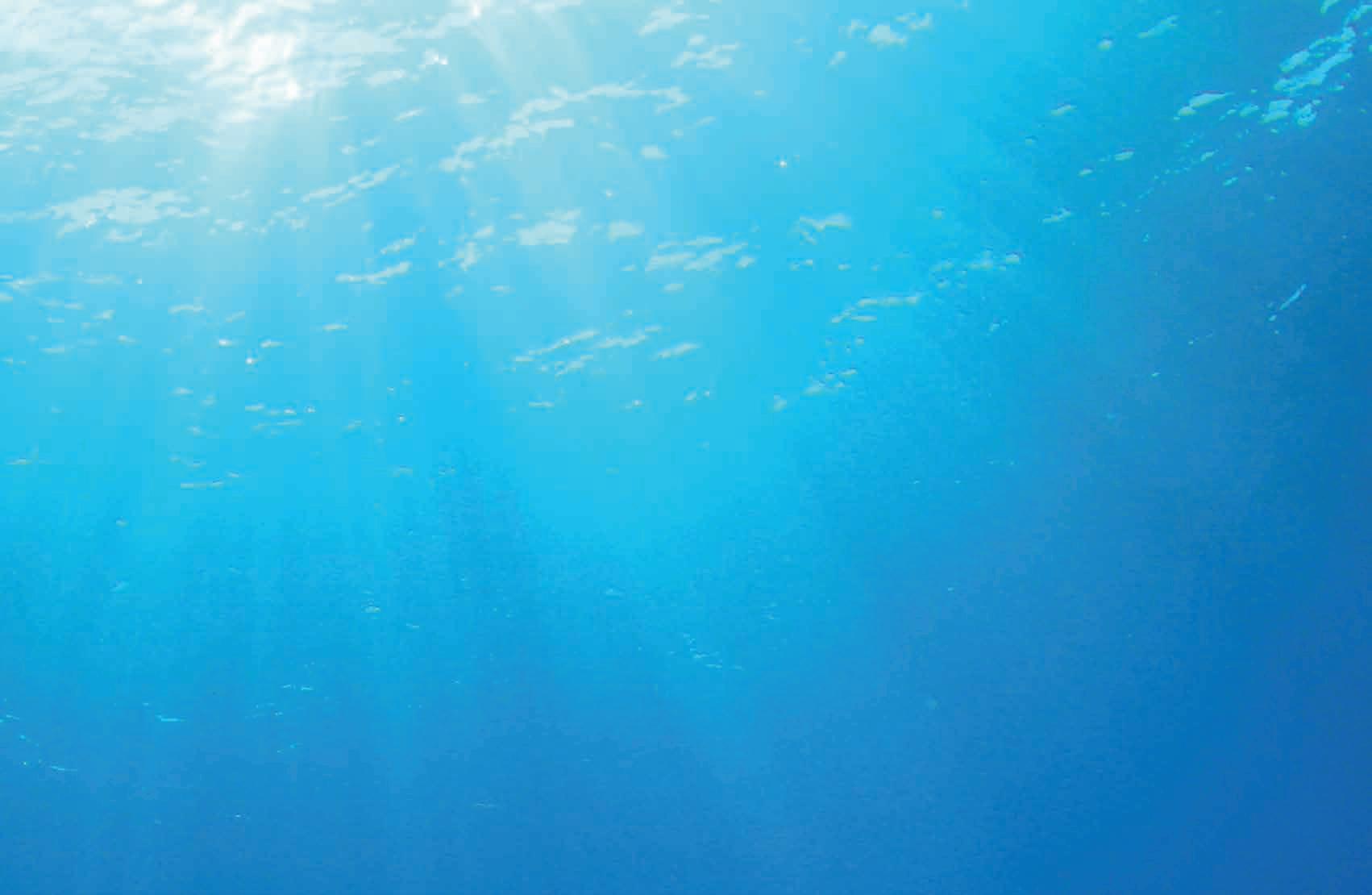

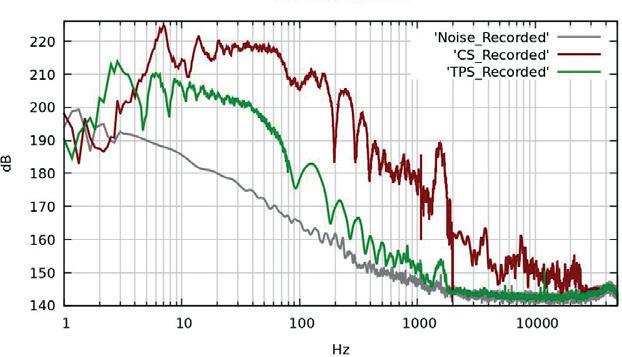
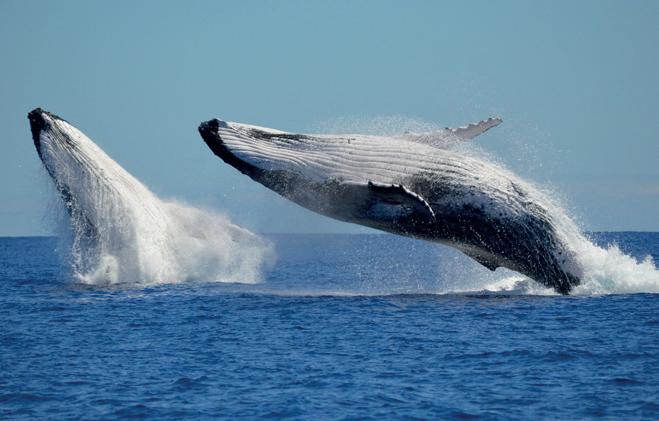

BY ANDREW M c BARNET


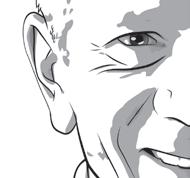

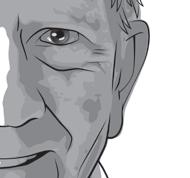



Fiddling while the Earth burns is becoming an increasingly popular trope to shame our civilisation’s apparent inability to galvanise itself into meaningful concerted action to mitigate climate change and its impact on communities around the world.
We get the analogy from the reign of Roman Emperor Nero (54-68 CE). He seemingly deserves some rehabilitation from some of the exaggerated accounts of his degenerate behaviour put about by his imperial successors, hostile biographers and even makers of movie epics in the modern era.
Nero is said to have fiddled while Rome burned, referring to the Great Rome Fire of 64 CE when two-thirds of the city was destroyed. This is literally implausible since violins weren’t invented until the 16th century, although Nero did play a stringed instrument, the cithara.
In his book Rome is Burning, (Princeton Press, 2020), classical historian Anthony A. Barrett argues that despite his many shortcomings Nero reacted in almost exemplary manner to the fire in Rome. He was at his summer villa outside Rome when the fire broke out, bursting the myth that he started it so he could rebuild Rome to his own liking. On hearing how serious the situation was, he travelled to Rome to provide hands on help in trying to prevent the spread of the fire, assisted in ordering housing for the dispossessed and later embarked on rebuilding a safer capital (although this did include some self-aggrandising, never built designs for the city).



Hawaiian island of Maui killing over 1000 people in the tourist town Lahaina was the worst incidence of wildfires in numerous states of the US. Chile, Kazakhstan and Turkey number some other countries badly affected recently. Our increasingly hot and dry climate creates the tinder box for these disasters.
The dangers of catastrophic flooding associated with changing climate conditions were graphically illustrated last year in Pakistan where floods submerged a significant part of the country affecting 33 million people, killing 1739 including 647 children and causing an estimated $30 billion in damage and economic losses. Last month’s devastating floods in Libya after two dams collapsed with loss of life in the thousands was initiated by unusually severe rainfall, associated with a change in weather patterns, although neglected infrastructure also played its part. China and SE Asia, especially countries such as India, Bangladesh, and Japan have already been shown to be vulnerable to serious flooding events.
‘Enough clues show where we are headed’
The question is whether fiddling, as in procrastination, over climate change describes our world today. Hypothetically posed in a court of law as a ‘yes’ or ‘no’ would surely put even the most distinguished expert witnesses on the spot. ‘It’s complicated’ is the obvious, more evasive answer.
It is not as though there are not enough clues showing where we are headed. This year in Europe unprecedented wildfires have broken out in Greece, Italy, Spain and Tenerife. In North America, Canada is having its worst year ever, while the fire on the
For every action there is a reaction doesn’t extend very far when it comes to human disasters. Obviously rescue operations and later supplies of international aid may follow any large-scale earthquake, flood, wildfire, etc. If we are not directly affected, we mostly carry on regardless so to speak, at best offering a donation to a relief fund or carrying out related local volunteer work. Whole communities can seemingly become inured to routine tragedies in their own backyard, e.g., thousands of cartel killings a year in Mexico, mass shootings in the US, both of which should be intolerable.
So with climate change, our human tendency is to put up with it even though the impact is becoming increasingly obvious and critical. This stems partly out of a feeling of helplessness. As individuals we are pretty powerless to tackle global warning. We are dependent on collective action and technology advance to rescue us, and there is the rub. Both strategies are problematic. For example, how does international collaboration rate? Ahead of the UN COP28 international meeting on climate change
in Dubai at the end of this month, the first ‘global stocktake’ has been published under the Framework Convention on Climate Change assessing implementation of the 2015 Paris Agreement on global emissions limiting global warming to 1.5% above pre-industrial levels. The assessment is not encouraging.
It calls for ‘setting more ambitious targets in nationally determined contributions (NDCs) to realise existing and emerging opportunities across contexts, in order to reduce global GHG emissions by 43% by 2030 and further by 60% by 2035 compared with 2019 levels and reach net zero CO2 emissions by 2050 globally … achieving net zero CO2 and GHG emissions requires systems transformations across all sectors and contexts, including scaling up renewable energy while phasing out all unabated fossil fuels, ending deforestation, reducing non-CO2 emissions and implementing both supply- and demand-side measures.’
The report finds that ‘collectively, there is increasing ambition in plans and commitments for adaptation action and support, but most observed adaptation efforts are fragmented, incremental, sector-specific and unequally distributed across regions.’
Environmental activists will undoubtedly seize upon the finding that ‘$892 billion was invested in fossil fuels annually on average, and a further $450 billion was provided as subsidies for fossil fuel annually on average in 2019–2020’. An end to these subsidies is advocated.
look far less likely today, thanks in part to the 2015 Paris Agreement. That was when for the first time, almost every country agreed to submit a voluntary plan to curb its own planet-warming emissions. Since then, the rise in global greenhouse gases has notably slowed.
Of course COP is not the only show in town although the scale of its worldwide membership is important. There are countless international transition era agencies collaborating in one form or another. COP itself can’t help being perceived as a talking shop, but at least it provides focus. A major problem is that discussion of climate change mitigation and adaptation provides one of the few truly international platforms for airing of long-held grievances between rich and less developed countries born in colonial times and exacerbated since by the worldwide resource-extraction industries.
COP is toothless to enforce any recommendations, even unanimous ones. This contrasts with initiatives proposed by the European Community. It has an increasingly serious green agenda to which member states will eventually have to negotiate compliance.
‘COP is not the only show in town’
The global stocktake was two years in the making, prepared in cooperation with numerous countries and scheduled for a revisit every five years. It is a moot point whether it will have any greater effect than previous such reports when government representatives meet at COP28. The declaration from the G20 leaders meeting in Nairobi last month in fact only committed to a ‘phasedown’ of coal with no mention of other fossil fuels. This suggests COP28 will continue a tradition of pledges without owning them, underlining how fraught diplomatic negotiations on sensitive topics can be.
None of this is really shocking. Democratic governments are hamstrung by the perceived interests of their electorates, which can be conflicted. In the US President Biden and in the UK Prime Minister Rishi Sunak provide graphic but not untypical examples of trying to promote green agendas, humour the fossil fuel industries and ensure people’s ability to heat and light their homes and drive their cars. In the US in particular, the world’s second biggest emitter of CO2, many Republicans oppose green investment. It is all the more remarkable, therefore, that Biden was able to push through the Inflation Reduction Act which features the nation’s largest-ever investment ($11 billion) addressing climate change.
Limited support for any collective action is forthcoming from a demonised oil and gas business. It is struggling to find the right business model for its own trilemma of providing energy security, sustainability and affordability without upsetting everyone.
This does not mean individual governments have been powerless to act. The global stocktake concedes that many of the worst-case climate change scenarios feared in the early 2010s
We need to recognise that governments rely heavily on science and technology advice on the global warming, its potential impact and the solutions with the best prospects. Decisions based on such advice are not always an easy sell to a public illversed in the technical detail of sustainable energy resources. Hence windfarm proposals invite a lot of flak, and the attraction of small nuclear plants as an efficient, non-polluting source of energy has still to catch on.
As an actor in the energy transition, the geoscience and engineering community is working on some of these science-based outcomes and is therefore better placed than most to judge whether the world is dragging its feet on climate change issues –fiddling, in other words.
You can certainly say that interest in energy transition technology is high, acknowledgement that climate change research is being taken seriously. How that translates in practice is a different matter. Currently, there is no obvious winning strategy. Despite the best efforts of analysts, we simply don’t know what our energy world will look like in 2050 and where technology might have taken us.
Leaving aside solar and wind-power, most proposals to decarbonise are still in their infancy. Our EAGE events tell the story. The consensus is that CCS, geothermal, hydrogen, nuclear and other options all need more research, a viable business model and loads of investment. This latter has been unforthcoming from the private scale at the scale needed, suggesting that governments will have to pick up the bill to stimulate activity and also create an inviting framework for future operations.
Maybe instead of worrying if we are all doing enough, we should aspire to reach the point at which Nero reputedly could say – ‘I have done everything that I should, but the outcome is in the hand of fortune.’
Views expressed in Crosstalk are solely those of the author, who can be contacted at andrew@andrewmcbarnet.com.




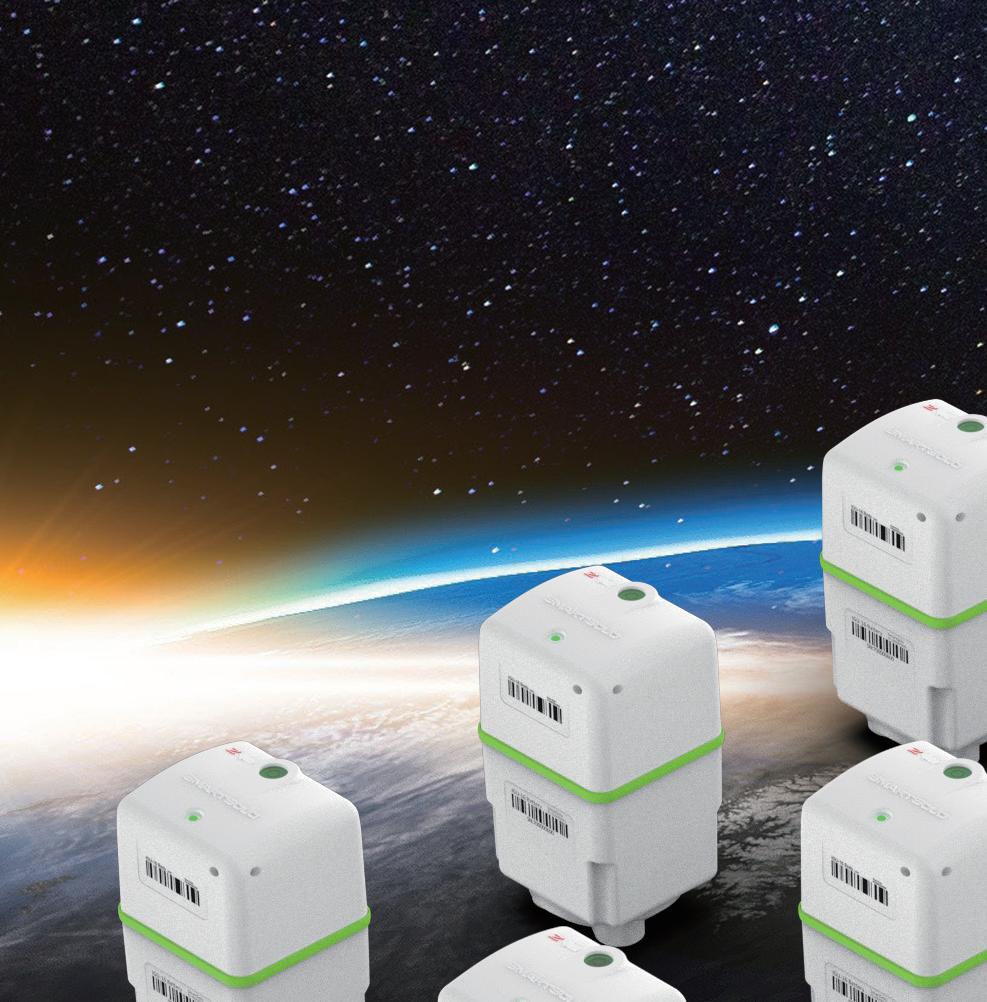
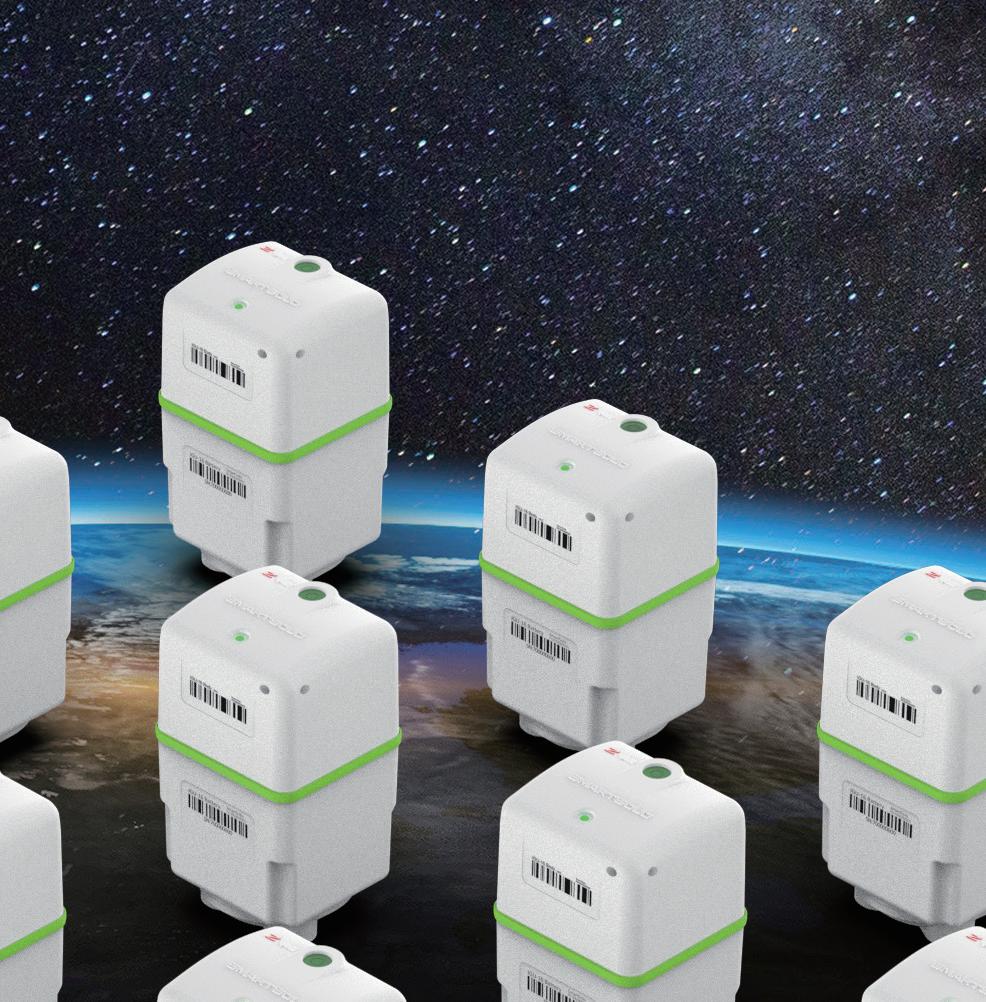

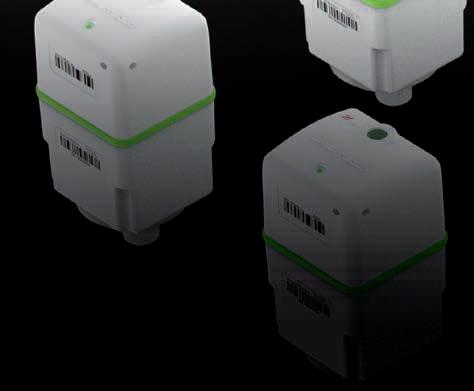


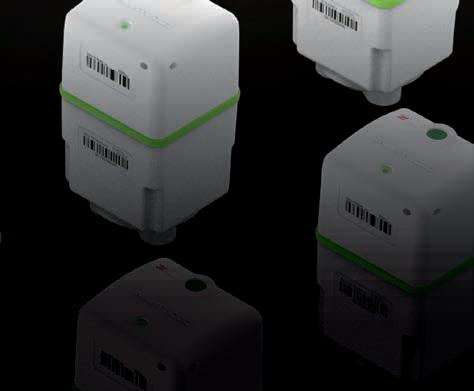
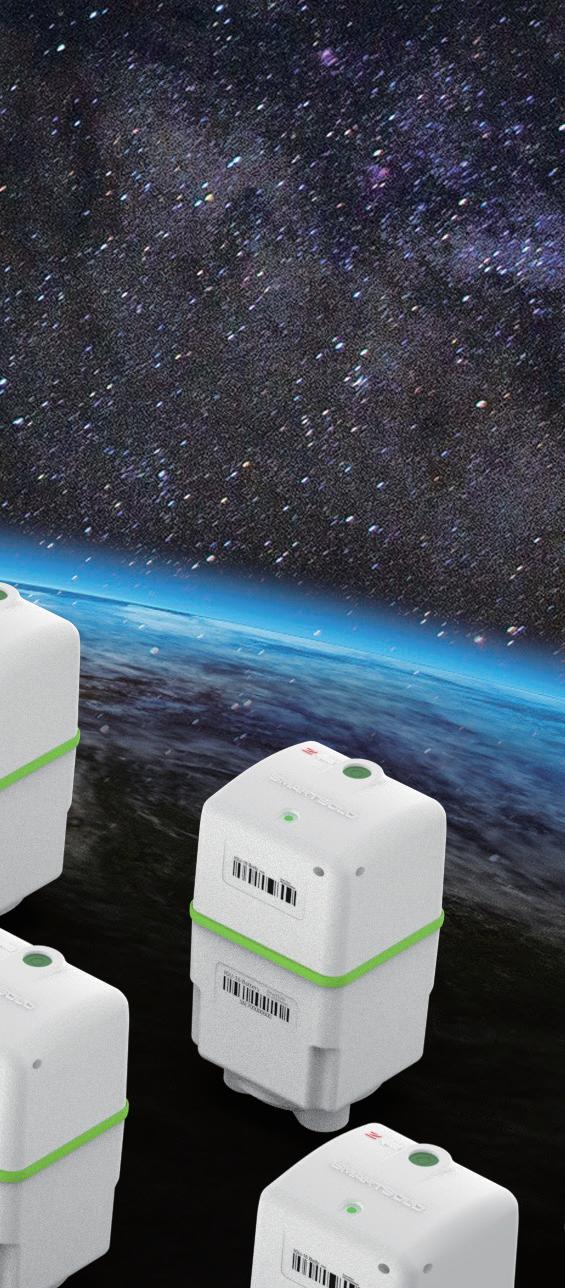

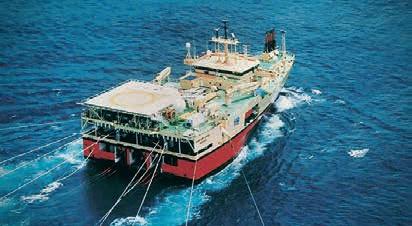

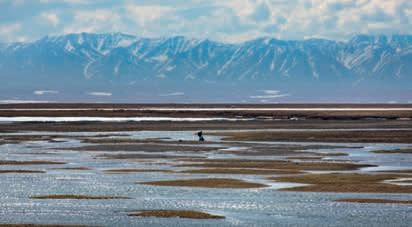
Norway and the UK are on course to achieve significant milestones due to notable increases in investments, exploration success and production, according to research from Rystad Energy. Solid oil and gas production from the region is also providing indispensable resources to Europe and the rest of the world navigating through the energy transition.
Investments in Norway’s oil and gas industry are expected to reach a recordhigh of about $21 billion in 2023. It comes as several key projects have been approved in recent years, driven by the country’s temporary tax regime, which was introduced to incentivise spending on the Norwegian Continental Shelf.
Emil Varre Sandoy, vice-president upstream, Rystad Energy, said: ‘With an impressive growth rate this year, the total investments in the Norwegian oil and gas industry are projected to surpass the record set in 2013, when total investments reached about $19 billion. Investments in 2023 are expected to reach an all-time high.›
Despite a decline of almost 15%, from a peak of nearly 4.6 million barrels of oil equivalent per day (boepd) in 2004, Norwegian oil and gas production is set to rise again. By 2025, production might rise back towards peak levels as a result of increased focus on gas production and new projects in the pipeline. These
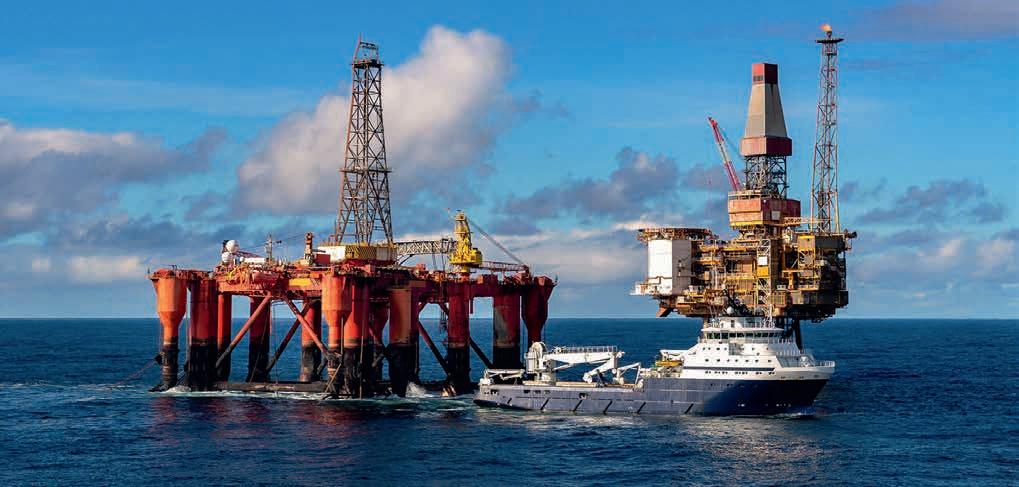
volumes will be produced with one of the world’s lowest CO2 footprints, said Rystad.
Oil and gas investments in the UK have not recovered in the same way as in Norway. It is expected that 2023 investments will be around 75% lower than 2013, when investment peaked at nearly $22.7 billion.
With many developments in the pipeline, however, next year could see the highest number of projects sanctioned in a decade. While three to five projects are sanctioned, on average, in the UK each year, 14 new oil and gas fields are expected to be given the green light in 2024.
Sonya Boodoo, senior upstream analyst, Rystad Energy, said: ‘The three largest projects are Rosebank, Cambo
and Clair Phase 3. If these major projects get approved, 2024 could mark the highest sanctioning activity since 2013, with around £9.5 billion in future investments.’
In 2014, 57 new oil and gas exploration wells were drilled in Norway. Only two years later, the count fell to 27 as the oil price collapsed in 2015 and 2016. Activity increased in 2018 and 2019, before falling again in 2020 due to Covid19 and low oil prices.
This year, the number of exploration wells is expected to reach 35 and is anticipated to grow to 36 next year. It has also been a good year for new discoveries, with similar volumes as last year already uncovered, despite only about half of the planned wells for 2023 being completed to date, said Rystad.
TGS has secured funding for a series of multi-client projects in Southeast Asia, which are anticipated to commence in late Q4 2023.
The programme covers six months of new 2D and 3D seismic data acquisition, more than 6600 km of legacy 2D seismic data reprocessing and 300,000 km2 of 2D-cubed processing, tied together by a Facies Map Browser (FMB) product that enables fast-track exploration of a regional hotspot. These projects complement TGS’ existing library across India, Bangladesh, Indonesia, Malaysia, and Timor-Leste, encompassing 18,450 km of 2D data, 70,237 km 2 of 3D data, and 1,940,030 km2 of 2D-cubed data.
Kristian Johansen, CEO at TGS, said: ‘The energy demand is increasing in line with the region’s rapid economic growth, driven by growing populations and rising incomes. This growth brings with it a number of challenges as governments and E&P companies strive to supply this energy affordably and sustainably. TGS is supporting clients through these challeng-
es with all their exploration, production and CCS activities.’
Meanwhile, TGS has launched an extensive regional seismic imaging project that builds on existing Indonesian seismic coverage.
The Kutei 2D-cubed survey in the Kutei basin will extend north from the East Java Sea 2D-cubed project area that concluded in late 2022.
Will Ashby, executive vice-president for the Eastern Hemisphere, said: ‘As we add to our extensive regional data library, we enable exploration companies to utilise the latest seismic imaging techniques to extract the maximum value from the existing data in the region.’
The adjacent East Java Sea 2Dcubed project was designed to help drive interest and exploration across the South Makassar and Northeast Java regions. The Kutei project will continue to build on this coverage, utilising 2Dcubed technology to integrate all existing seismic data into a single, conformable exploration package. It will add a further 115,400 km2 of 2D-cubed data resulting in a single,
expansive, homogenous dataset encompassing more than 380,000 km2 offshore Indonesia.
TGS’ 2Dcubed technology generates a 3D seismic volume from a set of 2D lines. It uses an advanced structurally conformable interpolation algorithm to maximise potential of existing 2D multi-vintage and 3D data. For the first time in Indonesia, this technology enables large databases of 2D to be matched and merged into a single tool to fast-track exploration. Where available, any legacy 3D seismic data will be post-stack merged into the 2D-cubed volume to allow for continuous regional coverage.
The Kutei 2D-cubed dataset adds to the Facies Map Browser (FMB) product, which generates a stratigraphic model based on well and seismic data over the East Java Sea and Kutei basins.
Finally, TGS has won multiple proprietary ocean bottom node (OBN) projects in the Gulf of Mexico. Negotiations and scope for the three-year project will be finalised in Q3 2023, with mobilsation expected in late Q1 2024.
PGS is bridging the gap between the renowned Nile Delta and the promising Herodotus Basin with the EGY23 Merneith survey offshore Egypt.
Acquisition of fresh 3D GeoStreamer data in this deepwater area is expected to yield detailed insights into prospective opportunities in a region that has captured considerable industry attention of late. The Herodotus Basin has substantial untapped potential.
The presence of a variable-thickness salt (evaporite) layer potentially serves as a seal across much of the area. PGS geoscientists suggest that the prime targets within this domain are likely to be presalt Oligo-Miocene structures hosting clastic reservoirs.
The vessel Ramform Titan will shoot the survey using GeoStreamer broadband
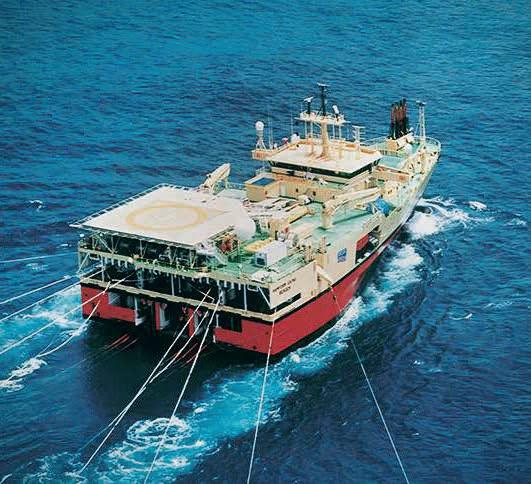
technology. PGS will also draw on the expertise of its partner EGAS, the Egyptian Natural Gas Holding Company.
Meanwhile, PGS has won a 3D exploration acquisition contract offshore Africa. A Ramform Titan Class vessel
will mobilise for the survey in the fourth quarter, subject to final approvals, and the programme has a total duration of 4-5 months.
‘There is increasing exploration interest in Africa and this award builds on the recent success of our Titan class vessels in this region,’ said president and CEO of PGS, Rune Olav Pedersen.
Finally, the PGS vessel Ramform Victory was planned to steam to Brazil for a large 4D contract survey for Petrobras later in Q3. However, permitting for the survey has been delayed. The steam to Brazil is therefore postponed to early Q4, whereupon the vessel will initially acquire data on a continuing highly pre-funded multi-client programme until all permits are in place for the contracted 4D survey.

Shearwater GeoServices has reached a key performance milestone on its most complex seismic processing algorithims as part of the Reveal seismic processing software using Nvidia GPUs.
It has achieved a 10x speed-up of Reverse Time Migration (RTM) and Kirchhoff algorithms, powered by Nvidia GPUs, to lower total power consumption for compute-intensive workloads, improve energy efficiency, and reduce operating costs.
Shearwater and Nvidia, which announced a technology collaboration in August, are aiming to further optimise the portfolio of GPU-accelerated tools in Reveal to ensure Reveal’s customers can run optimally scaling seismic workflows on their GPU-accelerated HPC infrastructure, in areas such as surface-related multiple removal and FWI imaging. Enabling customers to run optimally scaled seismic workflows on their GPU-accelerated HPC infrastructure will reduce processing time and lower carbon emissions from oil and gas operations.
Shearwater Reveal improved performance also leverages Nvidia Bitcomp, part of the nvCOMP library used in fast lossy data compression and decompression, for reverse time migration (RTM) and was rolled out in production and used regularly across Reveal. This library allows for accelerated compression of seismic snapshots and is an efficient way to compress wave-fields. Bitcomp reduces the memory transfer load between CPU and GPU and is becoming industry standard, said Shearwater. This results in a more efficient RTM workflow with significant speed-ups over workflows not leveraging the compression library, with one oil and gas customer achieving 8x speed-ups in application performance. Additionally, the solution allows users to run larger simulations given the available memory on the GPU.
‘Nvidia Tensor Core GPUs have been used to accelerate the performance of highend seismic data processing and imaging algorithms in Reveal, enabling faster and more accurate estimation of subsurface properties in complex geological settings,’ said Shearwater. ‘This ultimately translates to faster time-to-oil, to improved subsurface imaging in a fixed time frame, and revenue opportunities for energy providers. In addition to E&P, Reveal is used to process seismic data for shallow hazard mapping, windfarms planning, geothermal projects, and carbon capture, utilisation, and storage (CCUS).’
Fugro is performing offshore geophysical studies for the UK Crown Estate in the Celtic Sea off the coast of Wales and South West England to analyse plans for offshore wind farms.
The 100-day project will use towed and hull-mounted sensors to gather geophysical data on the properties of the seabed and sub-seabed.
The multi-million-pound programme includes plans for further surveys over the next two years to collect data on everything from wind and wave patterns to birds and marine mammals in the area. Datasets will be made freely available to successful bidders. Four project sites are set to deliver up to 4GW of floating wind capacity.
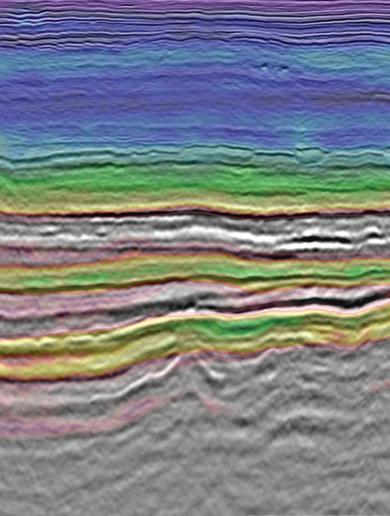
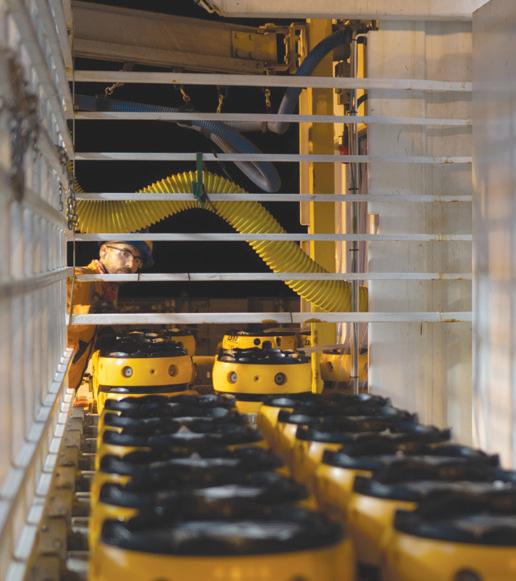


Stryde has unveiled its integrated in-field data processing service, Stryde Lens. This innovative solution is tailored to offer expedited access to interpretation-ready subsurface images, facilitating quicker decision-making.
their comprehension of survey design, adjusting it in real-time during the seismic acquisition project to achieve unparalleled imaging outcomes.’
Raw seismic data that is acquired by seismic recording devices in the field is notoriously complex and it can take months or even years to process it into a reliable image of the subsurface that can be understood.

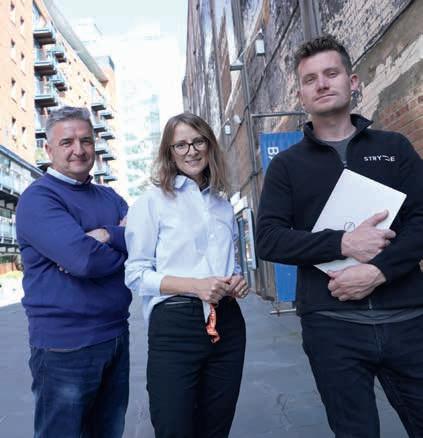
‘Coming just a little over a year after the introduction of the company’s data processing service, this solution for onshore subsurface data acquisition empowers clients with the fastest conceivable access to their seismic images. By processing the data at its source, companies can now attain subsurface insights in record time,’ said Stryde in a statement. ‘Operators can utilise the data to enhance
With Stryde Lens, processing sequences can commence as soon as sufficient data is acquired, eliminating the necessity to wait until the seismic survey concludes as well as allowing the processing to get a head start in defining processing parameters for the final deliverables. Shortened timeframes as a result can lead to substantial time and cost savings for clients, amounting to weeks or even months, said Stryde.
The solution operates in harmony with Stryde’s seismic recording devices and data acquisition system and works for the vast majority of seismic acquisition projects, the company added.
Stryde’s chief geophysicist, Amine Ourabah said: ‘Stryde Lens brings the processing service closer than ever to the acquisition phase. By enabling remote initiation of data processing on the same system where it’s been acquired, companies can access
US-based sensor company SeekOps has deployed its SeekIR solution, which uses technology initially created for the Mars Curiosity Rover, to gauge emissions across the North Sea.
In an energy sector first, by mounting an in-situ tunable diode laser absorption spectrometer (TDLAS) on a drone, high spatiotemporal methane emission measurement surveys have been conducted in an offshore environment. The system overcomes challenges posed by fixed-wing crewed and uncrewed aerial vehicles (UAV) which have restrictive flight patterns.
Measuring methane emissions is particularly difficult in offshore environ-
ments, with other methods using satellites and aircraft having low success rates due to backscatter from water, clouds being in the field of view and a lack of resolution required to quantify one asset in a region where there are others in proximity.
The TLDAS technology was first developed by Nasa’s Jet Propulsion Laboratory (JPL) to look for evidence of microbial life and was extremely sensitive to methane enhancements, before it was validated by the Methane Emissions Technology Evaluation Centre (METEC) in Colorado, United States.
Brendan Smith, SeekOps chief technology officer and co-founder,
an image of the subsurface very shortly after the end of the seismic survey, while keeping the data within the country – which is mandatory if data export is not permitted. This also facilitates best-in-class seismic processing geophysicists to collaborate on the data from any location globally, all while adhering to data export regulations.’
Stryde Lens recently processed a total of 200 km of 2D seismic data lines in the Middle East. Employing Stryde’s Nimble acquisition system to acquire the data, the entire project was managed within the country using the Stryde Nimble system, which was accessed remotely from London. A high-priority batch of seismic data was successfully delivered a month after completion of the acquisition.
Amine added: ‘By operating in this way, the service opens up access to expert, fast-track processing for companies in the Middle East and other regions where laws restrict data from leaving the country.’
In addition, the new solution reduces the need for expensive, local high-performance computing (HPC) solutions for products that do not require it, Stryde claimed. Local processing on the Stryde system also reduces the number of data copies and data shipments which in turn reduces capex for clients.
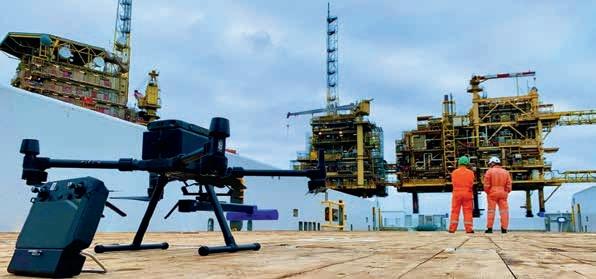
said: ‘With political, environmental and social pressures building, oil and gas operators are searching for ways to effectively reduce methane emissions. This forward-thinking solution combines two cutting-edge pieces of technology to provide companies with a modern and effective means of measuring their offshore methane emissions.’
Prominence Energy has reported that seismic interpretation has confirmed the presence of a closed structure of 29.8 km2 at the Big Apple prospect in the US Gulf of Mexico.
The Big Apple prospect straddles the boundary of two blocks A87 and A90 in the Brazos Area, South Addition. The blocks are located approximately 200 km south of Houston in 75 m of water and comprise an area of 46 km2
The main sand is interpreted to be approximately 43 m thick in the main area of the field, thinning to the north/ northeast and thickening to the southwest. A second shallower sand also with a Class II AVO anomaly is interpreted to be approximately 15 m thick and covering an area of 14.9 km2
Mapping and volumetric calculations have now been provided to Netherland, Sewell & Associates Inc, (NSAI) for
validation/audit for prospective resource volumes are published in the coming weeks.
Prominence managing director Alex Parks said: ‘The Big Apple Prospect is mapped and the area of the prospect is in line with the 29km2 evaluation made on a sparser data set before we bid on the blocks.’
There is still substantial work to be done before the project can be considered ‘drill ready’. PRM will seek to gather further data on wells and fields in the area to produce analogues for comparison and seek to further improve the mapping with broader basin analysis, seismic balancing to integrate data from multiple surveys and if appropriate seismic reprocessing, AVO work and other desktop studies. This week is expected to be completed before the end of the year before a farm-out process in early 2024
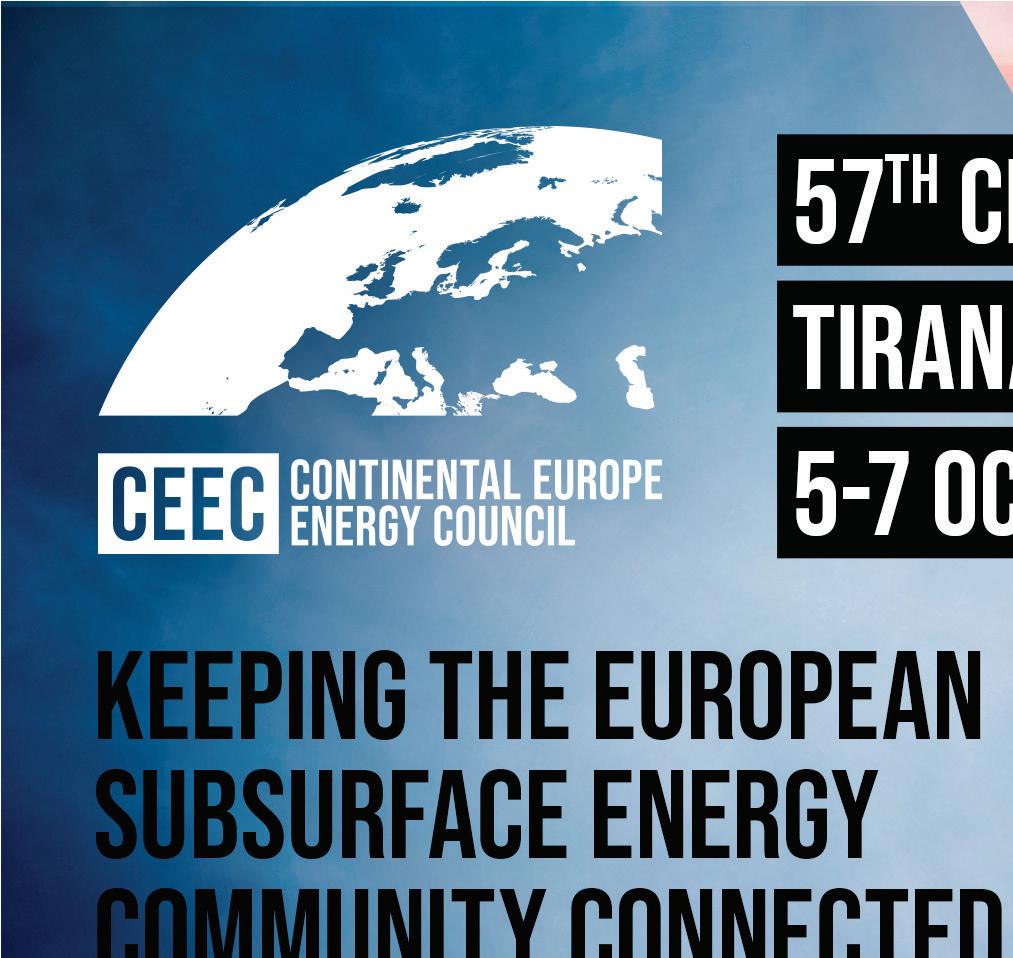

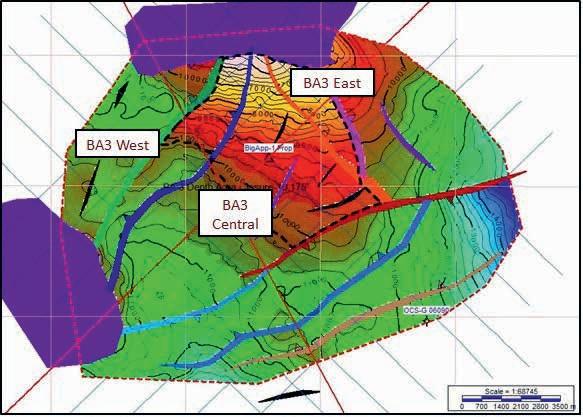



TGS has agreed an exclusive collaboration agreement with Apparition Geoservices GmbH to ramp up its OBN activities.
Under the terms of the four-year agreement, TGS and Apparition will collaborate through joint research, development and testing to fully commercialise Apparition technology in ocean bottom node, towed streamer and XHR data acquisition programs. The collaboration will allow TGS and Apparition to jointly provide integrated, encoded simultaneous source acquisition solutions to drive the next level of efficiency in seismic surveys.
Apparition has developed, through its Seismic Apparition methodology, advanced
seismic data acquisition techniques using multiple sources for seismic surveys. With multiple simultaneous sources, Seismic Apparition can provide significant productivity gains, densely sampled shot grids, data with high fold and SNR and enhanced low-frequency content.
TGS will use the Apparition methodology to improve efficiency and increase trace density on its OBN and towed-streamer surveys.
Carel Hooijkaas, EVP of Acquisition at TGS, said, ‘The collaboration with Apparition will allow us to further develop the Apparition methodology and bring significant improvements in operational efficiency, ultimately reducing the time to acquire our acquisition programmes.’
Johan Robertsson, president of Apparition Geoservices, said, ‘TGS’ global market share affords us a wider customer base and global footprint to build our market presence.’
ROGII Inc. focuses on creating a multi-disciplinary, collaborative environment through Solo Cloud, ensuring geoscientists, drillers and completions engineers can work together in on one centralised dataset.
TGS well data can be accessed within ROGII’s Data Manager application by enabling the TGS wells layer on the map to observe the diversity of the dataset. Logging into the user’s respective TGS account provides seamless access to importing data directly into a project within their Solo Cloud account or examining it with the gun barrel plot feature.
Jan Schoolmeesters, EVP of Digital Energy Solutions at TGS, said, ‘Our partnership with ROGII marks a significant step in enhancing the accessibility and usability of valuable well data for drilling engineers and development geologists.’
Julian Stahl, vice-president of global sales at ROGII, said: ‘We constantly strive to reduce clicks for our users. This seamless, backend database integration will greatly reduce ETL workflows across the geoscience discipline.’
Meanwhile, TGS has formed a strategic partnership with ROGII Inc. to provide an integrated solution that allows engineers and geologists to easily access TGS licensed well data within ROGII’s cloud-based platform, Solo Cloud. This will enable customers to quickly identify the right data for their geosteering and well planning workflows.
The North Sea oil and gas industry spent £1.6 billion decommissioning redundant wells and infrastructure last year, more than in any of the previous five years, new figures show.
The North Sea Transition Authority (NSTA) Decommissioning Cost and Performance Report reveals that the industry spent a total of around £8 billion from 2017-22.
Activity levels are expected to remain high, with about £2 billion a year forecast to be spent on decommissioning in the next decade
However, costs of decommissioning are rising sharply because of heightened demand for equipment, vessels and services from other regions and sectors, such as offshore wind development– taking the total cost estimate for decommissioning to £40 billion.
The NSTA is confident that industry can overcome these hurdles and meet its cost-efficiency target – lowering the estimate to £33.3 billion by end2028. However, operators must strive to deliver their agreed schedules and
commitments, work even more collaboratively with the supply chain and share their plans earlier, ensuring resources are available at the right time, said NSTA.
Bob Fennell, DaRT co-chair and North Sea executive vice-president at Harbour Energy, said: ‘Collaborating and sharing data is an important first step to providing the supply chain with the visibility and confidence they require to meet UK demand for such works in a timely and cost-competitive way.’

SLB, PGS and TGS have secured pre-funding to expand multi-client 3D coverage in the Sarawak Basin, offshore Malaysia.
The survey is the third phase of a multi-year contract awarded by Petronas in August 2020 to acquire and process up to 105,000 km2 of multi-client 3D seismic data over a five-year period in the Sarawak Basin. The first phase of the Sarawak multi-client 3D project encompassed 8400 km2, succeeded by an additional 6800 km2 during Phase 2
Kristian Johansen, TGS CEO, said: ‘Sarawak basins are one of Southeast Asia’s most exciting exploration hotspots, with numerous oil and gas discoveries announced in recent months. Malaysia continues to form a key part of our multi-client data library, and together with our partners, we look forward to delivering high-quality seismic data across the Sarawak basins.’
The Ramform Sovereign vessel is expected to mobilise in late August, covering approx. 5300 km2 for Phase 3, with acquisition completion anticipated in late November 2023.
Petronas, through Malaysia Petroleum Management (MPM), is actively enhancing its data sets that will introduce new plays to be explored, especially in imaging the pre-Middle Miocene Unconformity (MMU) play in the deep-water area of Sarawak Basin. This enhancement will enable clients to effectively conduct an assessment of the potential opportunities for exploration and participate in the Malaysia Bid Round.
Greenhouse gas emissions from UK offshore oil and gas production have been cut for the third consecutive year in 2022.
Last year’s estimated 3% reduction contributed to a 23% drop in greenhouse gas emissions between 2018 and 2022, according to the latest Emissions Monitoring Report from the UK North Sea Transition Authority (NSTA).
The industry remains well on track to meet targets to cut emissions 10% by 2025 and 25% by 2027, as agreed in the North Sea Transition Deal (NSTD) with the UK government in March 2021, said the NSTA. However, it added that bold measures will be required to hit the key target of halving emissions by 2030.
Industry investment in technologies which minimise flaring and fuel-efficiency initiatives meant emissions continued to fall, despite higher production than in 2021, said the NSTA.

For example, an operator replaced components in a gas export compressor, lowering fuel consumption by 18 tonnes a day and saving 20,000 tonnes of CO2e of emissions per annum.
Emissions decreased on 78% of offshore facilities between 2018 and 2022, in some cases through permanent shutdowns, but for 59% of those, through active emissions reduction initiatives.
Prominence Energy has won two adjacent exploration blocks in the USA Outer Continental Shelf off Texas in 75 m of water – Leases OCS-G-37341 and OCS-G-37342 cover an area of 46 km2. PRM bid after mapping and AVO analysis of seismic in the blocks, which identified a sizeable gas prospect. AVO analysis shows two sands with Class III AVO anomalies (a strong indication of a gas-filled sand). The main sand is interpreted to be a Middle Miocene Corsair delta sand up to 46 m thick, with an area of between 4000 to 7500 acres. The sand is steeply dipping and the gas column could be up to 850 m from crest to structural closure. PRM intends to purchase the remaining seismic over the prospect.
EMGS has secured $1 million in revenue related to its existing multi-client library in Norway. The revenue will be recognised in the third quarter of 2023.
SeaBird Exploration has reported second quarter revenues of $9.7 million and EBITDA of $4.6 million. Net interest-bearing debt was $15 million with vessel utilisation of 90%. Loans were refinanced in July 2023.
Petronas Digital is collaborating with Microsoft and Cegal to accelerate digital innovation for the upstream value chain. The collaboration will develop the Microsoft Azure High-Performance Computing (HPC), AI Infrastructure platform to support and scale a wide array of applications that would optimise Petronas Upstream’s operational efficiency, including advanced artificial intelligence, machine learning, energy transition and decarbonisation use cases.
SLB has agreed with INEOS Energy to collaborate and innovate subsurface technologies, including AI capabilities, to help it drive operational performance for continued growth, new acquisitions, and Carbon Capture and Storage (CCS).
PGS has received an A score for excellent ESG reporting in the ESG100 report examining corporate ESG reporting in the 300 largest listed companies in Sweden, Denmark and Norway.
The UK and Awarded have awarded a number of CO2 storage licences in depleted reservoirs in the North Sea as the area fast develops into a trailblazing CCUS hub.
Synergia Energy and Wintershall Dea have won its first licence to store CO2 under the UK North Sea. The Camelot licence’s annual storage potential is up to 6 million tonnes and the area is a combination of depleted gas fields and overlying saline aquifer.
‘Wintershall Dea is among the leading CCS players in the North Sea with a total of four licences in three North Sea countries. With the Camelot project, we are once again reaffirming our intention to develop CO2 storage sites in the North Sea to deliver solutions to tackle climate
change and decarbonise industries,’ said Hugo Dijkgraaf, Wintershall Dea’s chief technology officer.
The UK North Sea Transition Authority has also awarded Carbon Catalyst and Perenco UK (PUK) two carbon storage licences in the North Sea to progress the Orion carbon storage project in the Southern North Sea sector of the UK Continental Shelf. The two carbon storage licences cover the PUK-operated and decommissioned Amethyst and depleted West Sole gas fields, close to the UK’s biggest industrial cluster at Humberside. The project is planned to be operational by 2031, with initial CO2 injection rates of 1 million tonnes per annum (Mtpa), ramping up to over 6 Mtpa.
Norway has awarded the Trudvang carbon storage licence to Sval, Storegga and Neptune Energy which will partner with Neptune and Storegga. The Trudvang area in the Norwegian North Sea has the potential to store up to 225 million tonnes of CO2 over the next 25 years. The storage reservoir is at a depth of approx. 850 m in the Utsira formation.Trundvang is 165 km offshore and west of the Equinor-operated Sleipner Field.
Neptune Energy managing director in the Norway and the UK, Odin Estensen said: ‘We were recently awarded three CO2 storage licences in the UK, and we continue to progress our L10 carbon storage project in the Netherlands. Our ambition is to build a portfolio of carbon stores linking to our core areas in the North Sea.’
Sercel has launched the MetaBlue data-driven solution for marine seismic survey planning and management. The tool assists E&P companies and marine seismic service providers in reducing project turnaround times by seamlessly connecting every phase of a marine seismic project.
MetaBlue brings together all the information relating to an offshore seismic survey within a single ecosystem. Project stakeholders can easily access and exploit all the different data from the various survey technologies and equipment used throughout a seismic survey, including Sercel’s navigation and planning software, advanced MEMS-based node portfolio, towed-streamer technology, advanced source solutions, and survey optimisation services. By being able to leverage efficiently all the survey data from these different project components within the MetaBlue ecosystem, project stakeholders can make holistic decisions at every stage of the survey, said Sercel.
Meanwhile, in response to growing requirements for deepwater exploration,
Sercel has launched the GPR3000 nodal solution for high-density OBN surveys down to depths of 3000 m. To complete Sercel’s OBN offering, the MicrOBS sparse nodal solution is ideally suited for sparse deepwater OBN operations down to 6000 m.
Sercel now has a complete portfolio of seabed nodal solutions for all water depths down to 6000 m to meet growing industry demand for ocean bottom node (OBN) seismic surveys, the company said. Based on Sercel’s QuietSeis broadband digital sensor technology, the full OBN portfolio also includes the GPR300 and the GPR700.
The GPR300 nodal solution was specifically designed for seismic acquisition in shallow water down to 300 m. Since its launch in 2021, more than 50,000 nodes have been successfully deployed in the field.
The GPR700 was unveiled in the summer, extending OBN survey operations to the limits of the continental shelf at depths of up to 700 m.
Emmanuelle Dubu, Sercel CEO, said: ‘With our comprehensive portfolio of high-tech OBN solutions — all seamlessly
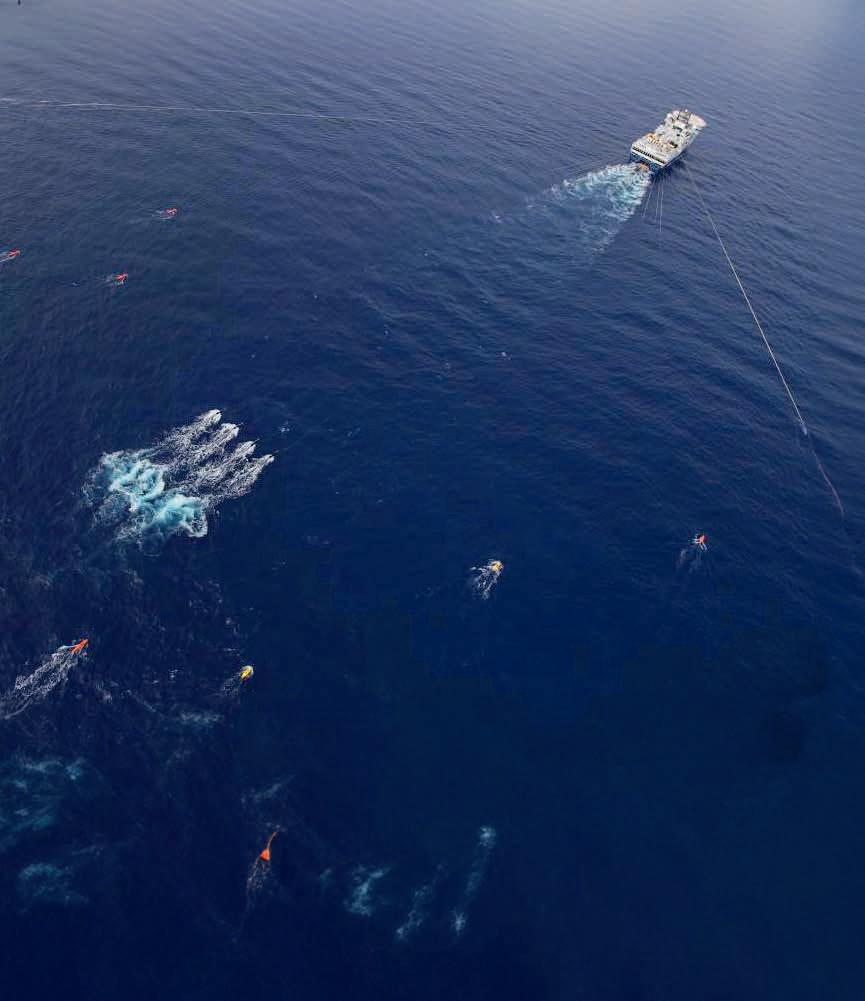
Survey in progress using Sercel kit.
integrated into our new MetaBlue marine survey management solution — we are uniquely positioned to support our customers in their offshore exploration and monitoring projects, whatever the depth.’
PGS has agreed a one-year collaboration with inApril focused on the hybrid towed-streamer and ocean bottom node market. ‘The strategic collaboration with inApril expands our service offering and capabilities in the contract and multi-client acquisition segments, and further enhances PGS’ position in a recovering seismic market’, said Rune
Olav Pedersen, president and CEO of PGS.

Credit: inApril (file image).
Anne Camerer, CEO of inApril, said: ‘inApril welcomes the opportunity to work with a major marine geophysical contractor such as PGS and believe we can mutually benefit from the strategic collaboration to serve the global market for OBN seismic in an increasing number of contexts including exploration, reservoir monitoring and carbon capture and storage.’
Nigeria’s O&G sector is set for a revival, especially in offshore deep waters, as domestic reforms to improve the country’s business environment and promote exploration take effect, according to research by Westwood.
Traditionally Africa’s largest oil producer, Nigeria has struggled to maintain its potential output. For a country with reserves of 37,100 mmbbls and 206 tcf, production remains well below the average of 3 mmboepd of 2010-2015. This is due to a reduction in upstream capex estimated to be 74% between 2014 and 2022, from $27 billion to $6 billion.
However, the long-delayed Petroleum Industry Bill (PIB) in 2021 has improved the fiscal attractiveness in the sector. This bill also paved the way for the privatisation of the Nigerian National Petroleum Corporation (NNPC) in July 2022. A clause in the PIB states that 30% of the NNPC’s profits are to be reinvested in the soon-to-be introduced Frontier Exploration Fund. The government has also made progress in addressing security instability and oil theft, said Westwood.
Nigeria’s newly elected president Bola Ahmed Tinubu has pledged to boost crude production from the 1.3 mmbpd produced in 2022 to 2.6 mmbpd by 2027. ‘While Westwood expects there to be growth, this target appears to be overly ambitious. Key projects expected to support production increase over the forecast have historically experienced
delays. Given the projects on the horizon, Westwood forecasts oil production output of 1.9 mmbpd by 2030.’
Notable near-term offshore projects include the soon-to-be sanctioned TotalEnergies’ Preowei Phase I development, with a production output of 65 kbpd, expected to commence in 2026. An additional 120 kbpd from Shell’s Bonga North is also expected in 2027. Furthermore, first oil from ExxonMobil’s Owowo and Bosi oil fields is currently estimated in 2029 and 2030, respectively. Likewise, gas production is expected to register a slight upturn with Shell’s HI and HA shallow water developments coming onstream in 2027 and 2029, respectively. Should they all progress on schedule, this influx of new projects will boost overall O&G production to 2.6 mmboepd by 2030.
Meanwhile, NNPC’s mini-exploratory bid round for seven ultradeep offshore blocks took place in January 2023. This follows the 2020 marginal field bid round, where 57 marginal O&G fields were awarded to 24 indigenous players to develop dormant assets in land, swamp and shallow offshore terrains. In 2020 an NNPC drilling campaign resulted in an onshore discovery of 1000 mmbbls and 500 bcf of gas in the Kolmani area in northern Nigeria. Geoplex, a local oil field services (OFS) company, is planning to develop the offshore Indibe field in OML 67, where it anticipates first oil in 2H 2023. Furthermore, in May 2023 the NNPC began drilling the
onshore Wadi-B appraisal well in the frontier Lake Chad basin targeting a prospect that has been abandoned since the 1980s. In the same month, the NNPC also spudded the Ebenyi-A exploration well in OPL 826 in Borno State.
From the development of these discoveries, Westwood anticipates an increase in drilling activities between 2023 and 2030 up to an average of 140 development wells drilled year-on-year until 2030. Likewise, offshore deepwater drilling will increase from 2026 with the development of Shell’s Bonga Southwest-Aparo field, Chevron’s Nsiko, TotalEnergies’ Preowei Phase II development and ExxonMobil’s Uge oil fields, which are all set to start producing post-2030. Infill drilling in deepwater is likely to continue, with the most recent example being the drilling of up to 11 infill wells in TotalEnergies’ Egina and Akpo fields starting in 3Q 2023.
‘Overall, Nigeria is setting a solid foundation to capitalise on the energy deficit registered in European nations and hydrocarbon demand from industrialising nations such as China and India,’ said Westwood. ‘However, Nigeria must tackle its infrastructural and security problems and continue to create an attractive business environment to encourage international energy companies to keep investing, especially offshore. All in all, significant strides have been made to transform the O&G industry.’
Chevron is investing in two low carbon projects in Western Australia (WA). Chevron will fund the Carbon Sync soil carbon sequestration project in 80,000 hectares of cropping and grazing land. Chevron has also joined a multi-year research project with Deakin University’s Blue Carbon Lab to explore CO2 sequestration opportunities in WA’s coastal wetlands.
The Danish Energy Agency has postponed the second tender round for offshore licences for exploration and use of the subsoil for the geological storage of CO2 in the North Sea. The tender was set to open on 15 August, but will now be launched later in 2023.
Bp is providing $12.5 million finance for Advanced Ionics, developer of hydrogen electrolysers for expanding green hydrogen production. Funding will facilitate deployment of its Symbion water vapour electrolyser technology for heavy industry. Water vapour electrolysers will reduce cost and electricity requirements by symbiotically integrating with standard industrial processes to harness available heat.
Fugro has signed a five-year agreement with the Indian Institute of Technology (IIT), Mumbai, to develop carbon capture utilisation and storage (CCUS) projects in India. Fugro will use its geo-data technologies to support IIT in identifying pilot projects.
Equinor has acquired a 25% interest in Bayou Bend CCS, expected to be one of the largest US carbon capture and storage projects along the Gulf Coast in Southeast Texas. Bayou Bend includes nearly 100,000 gross acres onshore in Chambers and Jefferson Counties, Texas, and approximately 40,000 gross acres offshore Beaumont and Port Arthur, Texas.
The US Department of the Interior has held its first offshore wind energy auction for the Gulf of Mexico region, resulting in one lease area receiving a high bid of $5.6 million. RWE was the winner of the Lake Charles Lease Area, which has the potential to generate 1.24 gigawatts.
TGS has launched the TGS Data Verse cloud-based solution designed to revolutionise the way companies manage energy data. The solution, also known as Data Management as a Service (DMaaS), offers a comprehensive suite of tools and technologies that empower energy companies to efficiently handle their data.
Jan Schoolmeesters, EVP of Digital Energy Solutions at TGS, said: ‘With this cutting-edge solution, companies can streamline their data workflows, accelerate decision-making processes and unlock new levels of efficiency in just a few days.’
TGS Data Verse offers a unique opportunity for companies to optimise their operations and drive cost savings.
Leveraging Multi Dimensional Input Output (MDIO), TGS’ fully open-source data storage format, the solution significantly reduce storage costs by more than 30%, said TGS. The solution empowers users with faster data access, providing up-to-date information at their fingertips for quicker decision-making and streamlined workflows, the company said. By managing the complexities of data infrastructure in the cloud, TGS Data Verse eliminates operational complexities and reduces digital clutter. This includes optimising ingestion, quality control, cataloguing, and streaming workflows.
With machine learning (ML) and artificial intelligence (AI) readiness, the platform enables users to uncover patterns, trends and insights within their data, facilitating informed and confident decision-making in days rather than months. Find out more at www.tgs.com/digital/data-managementas-a-service.
Meanwhile, TGS has expanded its Carbon Axiom platform, an advanced CCS site screening and storage assessment tool to encompass 62 million acres across the southern US.
The Carbon Axiom expansion will offer the states of Arkansas, Mississippi and Alabama subsurface intelligence, including intermediate stratigraphy deliverables and carbon storage volumetrics for those seeking to sequester carbon. The upper Gulf Coast region harbours promising aquifer
sequences within the Jurassic, Cretaceous, and Eocene strata. The expansion will also chart potential storage avenues through well-based interpretations and volumetrics calculations.
Carbon Axiom is a web-based platform enabling comprehensive screening for potential CO2 storage opportunities within the area of interest through integration of subsurface assessments for storage resources with surface infrastructure information.
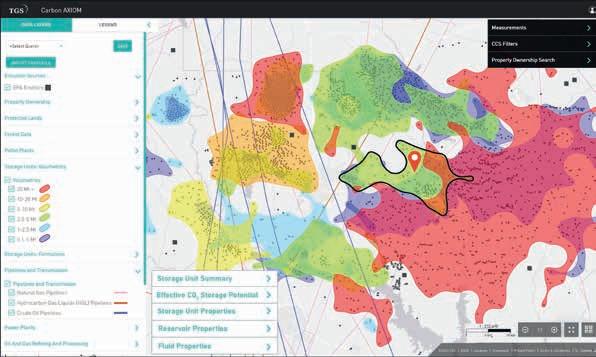
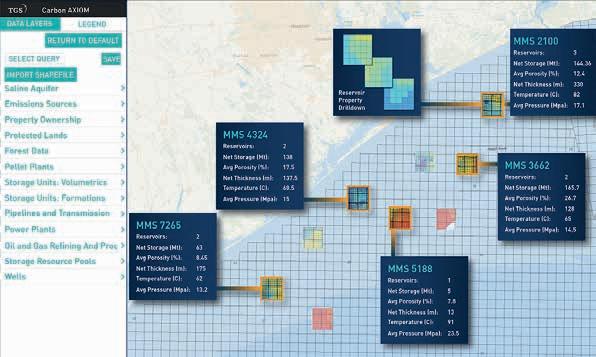
‘Carbon AXIOM’s robust workflows seamlessly provide essential reservoir attributes – temperature, pressure, salinity, porosity, permeability, reservoir thickness and prospective carbon storage volumes –both in depleted hydrocarbon reservoirs and saline aquifer formations,’ said TGS. ‘This information empowers carbon emitters and subsurface operators, enabling informed decisions and secure sequestration avenues, resulting in viable, cost-effective storage capacity utilisation.’
The expansion of Carbon Axiom is supported by industry funding and is set to be released in H2 2023. Intermediate stratigraphy deliverables will be available Q3 and carbon storage volumetrics in Q4.
PGS has reported a second quarter net loss of $9 million on produced revenues of $186 million to a net profit of $19 million on produced revenues of $210 million in Q2 2022.
Operating profit was $23 million compared to $50 million in Q2 2022.
Contract revenues were $71 million in Q2 2023, compared to $62.8 million in Q2 2022. Multi-client late sales revenues were approx. $55 million in Q2 2023, compared to $108.2 million in Q2 2022 (‘when the company benefited from significant transfer fees’).
Estimated produced multi-client pre-funding revenues in Q2 2023 were approx. $54 million compared to $32.6 million in Q2 2022. Multi-client pre-funding revenues based on IFRS, where revenues are recognised at the time of delivery of
finally processed data, were approx. $24 million in Q2 2023, compared to $96.5 million in Q2 2022.
Operating expenses of $125 million for Q2 were up from $116 million in Q2 2022.
PGS president and CEO Rune Olav Pedersen said: ‘Our Q2 revenues confirm an improving seismic market, considering the weather-related challenges we encountered in the Norwegian Sea and the Barents Sea in the early part of the Europe season, and a delayed yard stay for Ramform Sovereign in Asia Pacific.
‘I am pleased to see a meaningful pick up of multi-client late sales which more than doubled sequentially from Q1.
For contract surveys, we continue to deliver improving rates and margins,’ Pederseon added.’
Eni has published The Route to Net Zero. Decarbonizing the Maritime Sector on how the global shipping sector can decarbonise.
In collaboration with three of the largest companies in the maritime sector (Wärtsilä, WinGD and MAN Energy Solutions) and several big Italian companies, the document analyses the technological evolution of engines and infrastructure for low-carbon energy sources.
More than 100,000 merchant ships transport 12 billion tonnes of goods per year around the world. Ninety per cent of goods are transported by sea and it is estimated that the sector accounts for about 3% of all global greenhouse gas emissions.
There are several available renewable energy sources (HVO, FAME, LPG, LNG, methanol, ammonia, synthetic fuels and hydro-
gen) for developing the next generation of shipping.
Engine makers are ready to develop tailor-made solutions for different types of fuel, said Eni. For new orders shipowners are experimenting with single-fuel engines (trialling also on-board CO2 capture for LNG or technologies that capture carbon in solid form before combustion) and dual-fuel engines (using liquid or gaseous fuels including biofuels, methanol and in the longterm ammonia and hydrogen). The partners have agreed to carry out pilot cases on biofuels.
Giuseppe Ricci , chief operating officer for energy evolution at Eni, said : ‘At Eni, we strongly believe in this project, which for us is a first step both to promoting mature solutions like biofuels and to test longer-term solutions.’
The US government has taken steps to protect the Arctic National Wildlife Refuge (Arctic Refuge) and more than 13 million acres in the National Petroleum Reserve in Alaska (NPR-A).
In the Arctic Refuge, secretary of the interior Deb Haaland has authorised the cancellation of the remaining seven oil and gas leases issued by the previous administration in the Coastal Plain. The leases were suspended in June 2021 after an order identifying ‘multiple legal deficiencies in the underlying record supporting the leases’.
In addition, the Department has proposed new regulations for the NPR-A that would ensure maximum protection for the more than 13 million acres of Special Areas in the reserve, while supporting subsistence activities for Alaska Native communities.
‘With climate change warming the Arctic more than twice as fast as the rest of the planet, we must do everything within our control to meet the highest standards of care to protect this fragile ecosystem,’ said secretary Haaland.
The previous administration held an oil and gas lease sale in the Arctic Refuge’s Coastal Plain on January 6, 2021, and issued 10-year leases on nine tracts covering more than 430,000 acres.
On January 21, 2021, President Biden directed the department to review oil and gas leasing in the Refuge ‘in light of the alleged legal deficiencies underlying the program.’ Since that time, two of the issued leases have been cancelled and refunded. The remaining seven leases held by one company cover 365,000 acres in the Coastal Plain.
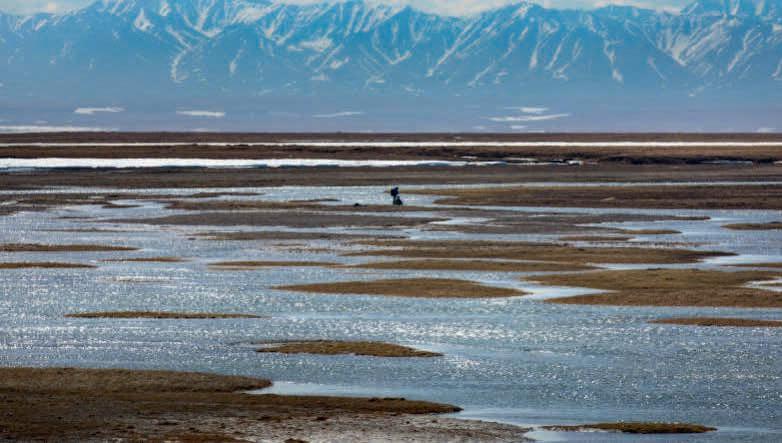
Oil majors have reported a drop in second quarter profits as a result of lower oil prices.
Saudi Arabia’s state-run oil company Aramco has reported $30 billion in second quarter profit, nearly 40% down from $48 billion in Q2 2022.
Total sales stood at just over $106 billion, down from $150 billion in the second quarter of 2022.
Equinor has reported adjusted earnings of $7.54 billion and $2.25 billion after tax in the second quarter of 2023. Net operating income was $7.05 billion, and net income was $1.83 billion.
During the quarter Equinor made a final investment decision for the BM-C-33 project in Brazil and received approval for
the development of the subsea tie-back fields Irpa and Verdande on the NCS.
Equinor completed seven exploration wells offshore with three commercial discoveries in the quarter. Ten wells were ongoing at the quarter end.
Cash flow and working capital amounted to $10.5 billion. Total capital expenditures were $4.35 billion.
Exxon Mobil has reported second quarter profits of $7.9 billion, down from a record $17.9 billion in Q2 2022 and $11.4 billion in Q1 2023. Revenue declined to $82.9 billion from $115.7 billion a year earlier.
Chevron has reported earnings of $6 billion for second quarter 2023, compared with $11.6 billion in second quarter 2022.
Equinor has discovered oil and gas about 4 km west of the Fram field in the North Sea. The target for wildcat well 35/11-26 S was to prove petroleum in sandstone in the Heather Formation from the Late Jurassic and the Brent Group from the Middle Jurassic, as well as to investigate reservoir properties in the Cook Formation from the Early Jurassic. Well 35/11-26 S encountered a 7-m gas column and a 26-m oil column in the Heather Formation, in sandstone layers totalling 33 m with moderate-to-good reservoir quality. Oil and gas were also proven in shallower intra-Heather sandstones. The discovery is estimated between 1.5 and 5.5 million Sm3 of recoverable oil equivalent.
Cheiron has discovered oil in the Geisum and Tawila West Concession in the Gulf of Suez. The well encountered 165 ft of good quality vertical net pay in the Pre-Miocene Nubia formation. As result of the drilling campaign, gross oil production from the concession has reached 23,000 bopd, compared to 4000 bopd before.
Sinopec has confirmed a 30.55-billion m3 natural gas discovery in phase-I
of its Bazhong gas field in northeast Sichuan, China. The sandstone gas reserve with a burial depth of over 4500 m is defined as an ultra-deep, tight sandstone gas reservoir, and the burial depth of the Bazhong gas field ranges from 4550 to 5225 m. Sinopec has developed three types of reservoir and permeability development models to clarify natural gas enrichment and high-yield production models and established reservoir prediction technique sequences.
Petronas has made six oil and gas discoveries in five blocks off the coast of Sarawak, Malaysia. The Gedombak well in Block SK306 and the Mirdanga well in Block SK411 (in the Balingian province), the Sinsing well in Block SK313, the Machinchang and Pangkin wells in Block SK301B, and the Kalung Emas well in Block SK315 (in the West Luconia province) exhibit low levels of contaminants, said Petronas.
Wellesley Petroleum has made a gas condensate and light oil discovery in the Norwegian North Sea. Drilling took place in licence PL1148 (Wellesley 50%, DNO 30%, Equinor 10%,
TotalEnergies reported $5.6 billion in net income in the second quarter, a drop from the $6.5 billion posted in the first quarter of this year and $9.8 billion posted during the same period last year.
Shell reported second quarter profits of $5.1 billion. Cash capex for 2023 is expected to be $23-26 billion.
BP has reported second quarter underlying replacement cost profit of $2.6 billion, compared with $5 billion for the previous quarter and $8.5 billion in Q1 2023.
Profit for the quarter was $1.8 billion, compared with $8.2 billion for the first quarter 2023. Operating cash flow was $6.3 billion.
AkerBP 10%) targeting the Carmen prospect. Well 35/10-10 S encountered a 210 m gas-condensate column in the Ness, Etive and Oseberg formations, 90 m of which is in sandstone layers with poor to good permeability. A 70 m gas-condensate column was encountered in the Cook Formation, 23 m of which is sandstone with poor permeability. A 13 m light oil column was also found in sandstones in the Early Jurassic Amundsen Formation. Well 35/10-10 A encountered a 240 m gas and volatile oil column in the Ness, Etive, Oseberg and Cook formations, 50 m of which is in sandstone layers with generally poor permeability. The well also encountered water-filled sandstone of good reservoir quality in the Cook Fm.
Melbana Energy has encountered strong oil and gas shows in the Almeda-2 appraisal well onshore Cuba. Drilling of Alameda-2 is proceeding ahead of plan with good oil shows, including oil in the mud, and elevated gas readings encountered within the reservoir interval through this drilled section between 700 and 1110 mMD.

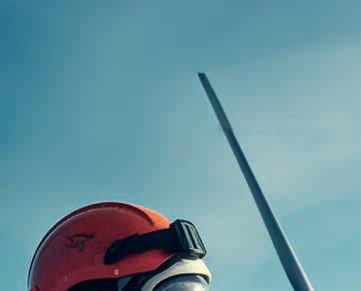



Geoscientists are already demonstrating crucial expertise in the emerging Energy Transition sectors of Carbon Capture Utilisation and Storage, offshore wind energy, hydrogen and geothermal energy. Seismic acquisition is playing an important role in creating the data that is enabling energy companies to develop renewable schemes the world needs.
Joss Smith et al present a toolkit that contextualises and automates the process of screening geological content so that carbon storage fairway extents and storage resources can be readily assessed and compared.
Jordan Bos et al present zero carbon-emission during field operations in an environmentally sensitive area at the border of The Netherlands and Belgium for the Einstein telescope.
Benjamin Durot demonstrates how Ultra High Resolution Seismic data is being giving vital insight into the shallow subsurface at the Waddeneilanden Wind Farm Zone in the Dutch sector of the Southern North Sea.
Alejandro Valenciano et al detail the MDIO format and specification and review five energy data applications: wind resource assessment, seismic data management, data processing, machine learning, and seismic data visualisation.
Sander de Jong et al demonstrate how the right blend of scientific and economic rigour could deliver virtually limitless geothermal resources.
Rasoul Sorkhabi outlines core and cross-disciplinary competencies that geoscience departments need to package and develop in order to be an integral part of energy transition research, funding, and technology.
Vetle Vinje et al study the use of 2D seismic and controlled source electromagnetic (CSEM) data to image the subsurface geology of the Mohns Ridge segment of the Arctic Mid-Ocean Ridge.
First Break Special Topics are covered by a mix of original articles dealing with case studies and the latest technology. Contributions to a Special Topic in First Break can be sent directly to the editorial office (firstbreak@eage.org). Submissions will be considered for publication by the editor.
It is also possible to submit a Technical Article to First Break. Technical Articles are subject to a peer review process and should be submitted via EAGE’s ScholarOne website: http://mc.manuscriptcentral.com/fb
You can find the First Break author guidelines online at www.firstbreak.org/guidelines.
January Land Seismic
February Digitalization / Machine Learning
March Reservoir Monitoring
April Unconventionals and Passive Seismic
May Global Exploration Hotspots
June Securing a Sustainable Future Together
July Modelling / Interpretation
August Near Surface Geo & Mining
September Reservoir Engineering & Geoscience
October Energy Transition
November Marine Acquisition
December Data Management and Processing
More Special Topics may be added during the course of the year.






2023 4th EAGE Global Energy Transition Conference & Exhibition 14-17 NOVEMBER 2023









Paris, France www.eageget.org


October 2023
2-4 Oct IOR+ 2023 22 nd European Symposium on Innovative and Optimised Resource Utilisation www.ior2023.org The Hague The Netherlands
2-4 Oct Geoterrace 2023 www.eage.org Lviv and Online Ukraine
5-6 Oct First EAGE Workshop on Hydrogen & Carbon Capture Sequestration in LATAM www.eage.org
Colombia
5-7 Oct 57 th CEEC Meeting ceecsg.org Tirana Albania
9-13 Oct Africa Oil Week africa-oilweek.com Cape Town South Africa
11-13 Oct 7 th World Engineers Convention www.wec2023.com Prague Czech Republic
16-19 Oct 18 th International Congress of the Brazilian Geophysical Society & Expogef sbgf.org.br/congresso Rio de Janeiro Brazil
17-18 Oct EAGE Workshop on Data Science - From Fundamentals to Opportunities www.eage.org
23-26 Oct 15 th Euroconference on Rock Physics and Rock Mechanics euroconf23.dryfta.com
24-25 Oct First EAGE Workshop on Water Footprint www.eage.org
The Netherlands
29 Oct3 Nov Mexican Geophysical Union (UGM) Annual Meeting: RAUGM2023 www.raugm.org.mx Puerto Vallarta Mexico
November 2023
3-5 Nov 14th SPG Biennial International Conference & Exposition spgindia.org
7-8 Nov 2 nd EAGE/Aqua Foundation Indian Near Surface Geophysics Conference & Exhibition www.nearsurfacegeophysics.in New Delhi India
7-10 Nov 17 th International Scientific Conference on Monitoring of Geological Processes and Environmental Conditions www.eage.org Kyiv and Online Ukraine
9-10 Nov Third EAGE Workshop on Mineral Exploration in Latin America: “The Role of Mining in the Energy Transition“ www.eage.org
Santiago de Chile Chile
14-17 Nov GET 2023 4th EAGE Global Energy Transition Conference & Exhibition www.eageget.org Paris France
15-17 Nov Second EAGE Workshop on Geothermal Energy in Latin America: Worldwide Opportunities www.eage.org
15-17 Nov 3 rd EAGE Workshop on Fiber Optics Sensing for Energy Applications www.eage.org
21-22 Nov 2 nd EAGE Workshop on Quantifying Uncertainty in Depth Imaging www.eage.org Kuala Lumpur Malaysia
21-23 Nov Fifth EAGE Borehole Geology Workshop www.eage.org Al Khobar Saudi Arabia
27-30 Nov Fifth EAGE Conference on Petroleum Geostatistics www.petroleumgeostatistics2023.org Porto Portugal
28-30 Nov EAGE/AAPG Hydrocarbon Seals Workshop www.eage.org
December 2023
4-6 Dec 4th EAGE Eastern Mediterranean Workshop www.eage.org
4-8 Dec 17th Workshop of the International Lithosphere Program ILP-Task Force VI on Sedimentary Basins ilp-abudhabi.com
January 2024
30-31 Jan EAGE/AAPG Workshop on New Discoveries in Mature Basins www.eage.org
February 2024
12-14 Feb IPTC 2024 www.iptcnet.org Dhahran
26-28 Feb First EAGE Data Processing Workshop www.eage.org
March 2024
4-6 Mar EAGE Sub-Saharan Africa Energy Forum www.eage.org
Greece
25-27 Mar 4th EAGE Digitalization Conference & Exhibition www.eagedigital.org Paris France
April 2024
8-10 Apr EAGE GeoTech 2024 Third EAGE Geoscience Technologies and Applications Conference (including 7 th EAGE Workshop on CO2 Geological Storage, 4th EAGE Workshop on Distributed Fibre Optics Sensing, and 4th EAGE Workshop on Practical Reservoir Monitoring) www.eage.org
June 2024
5-8 Jun 85 th EAGE Annual Conference and Exhibition www.eageannual.org Oslo Norway
September 2024
2-5 Sep ECMOR 2024 European Conference on the Mathematics of Geological Reservoirs www.ecmor.org
Oslo Norway
8-12 Sep Near Surface Geoscience Conference and Exhibition 2024 www.eagensg.org Helsinki Finland
23-24 Sep Asia Petroleum Geoscience Conference and Exhibition (APGCE) icep.com.my/apgce
Kuala Lumpur Malaysia


























































































































































